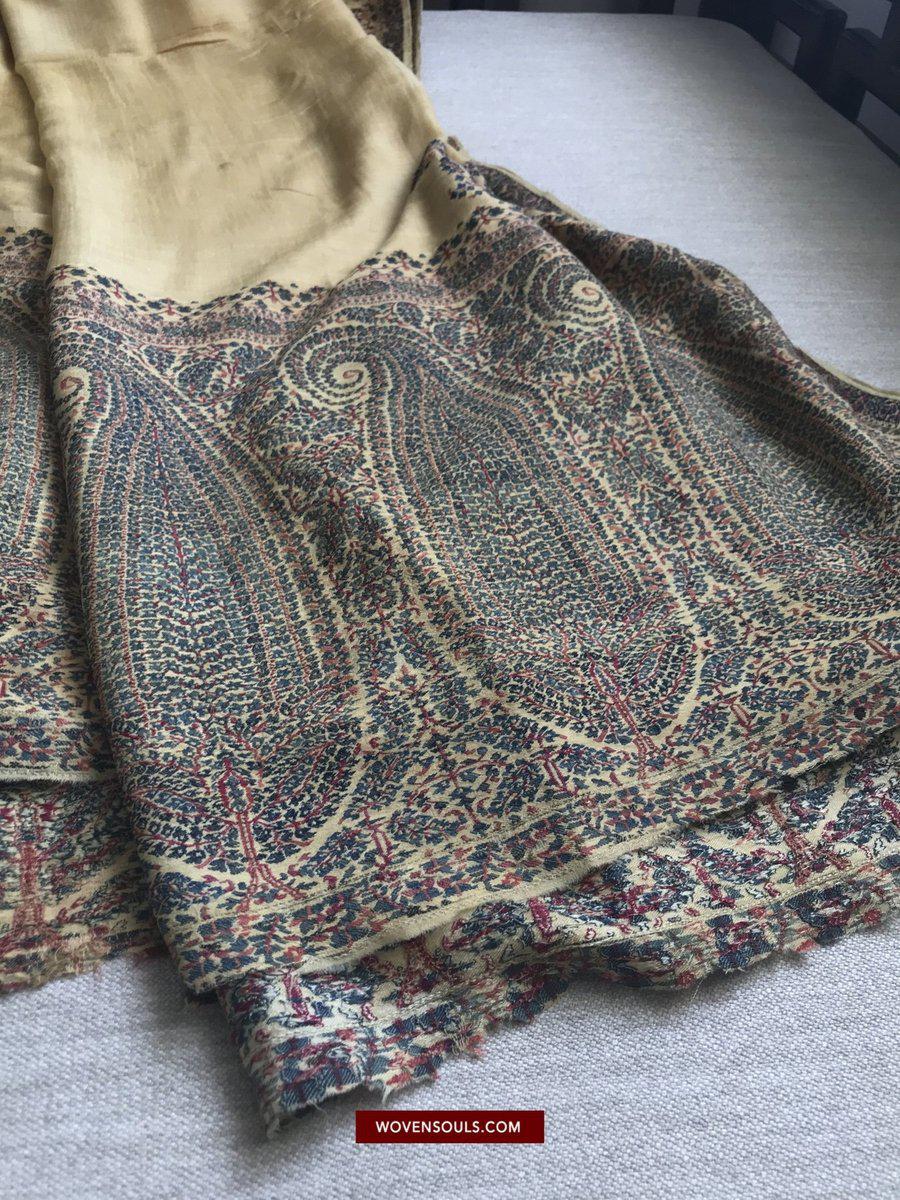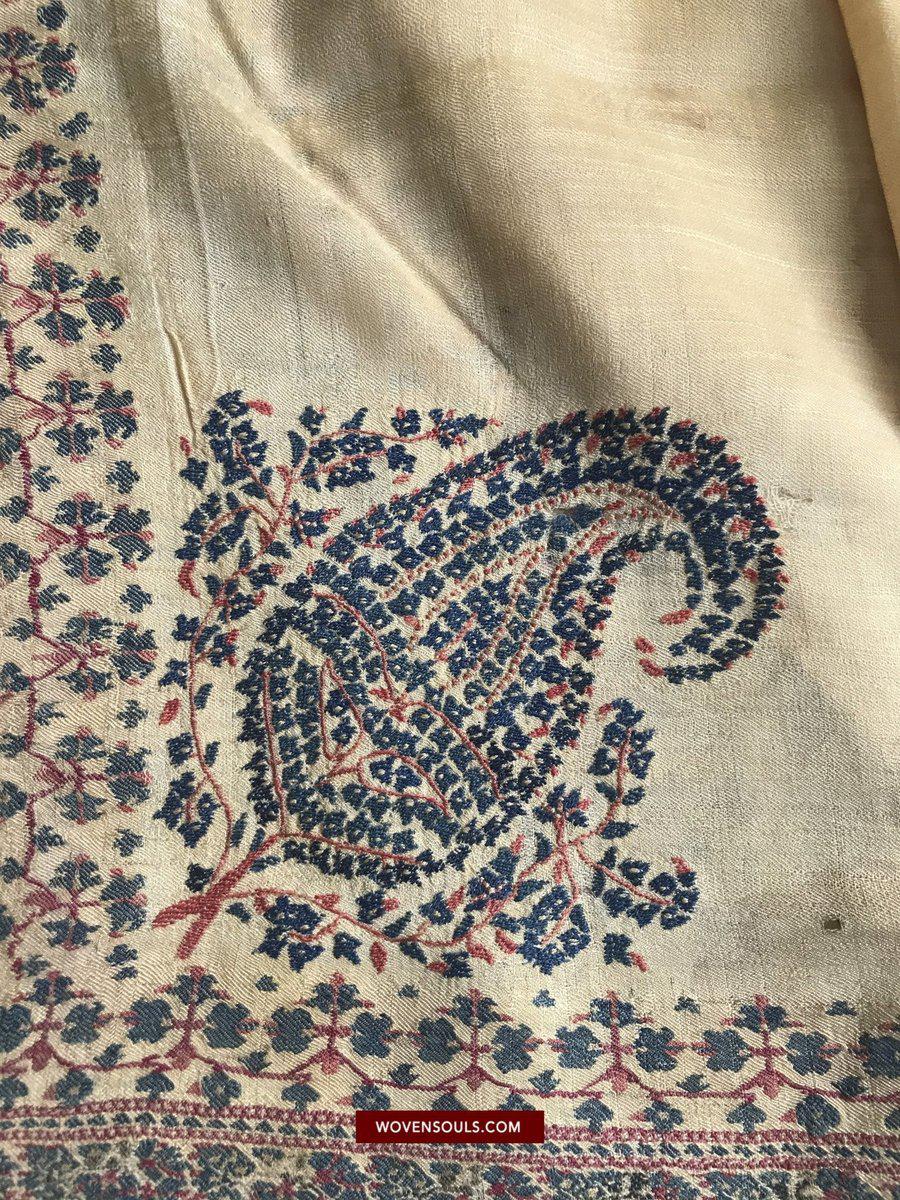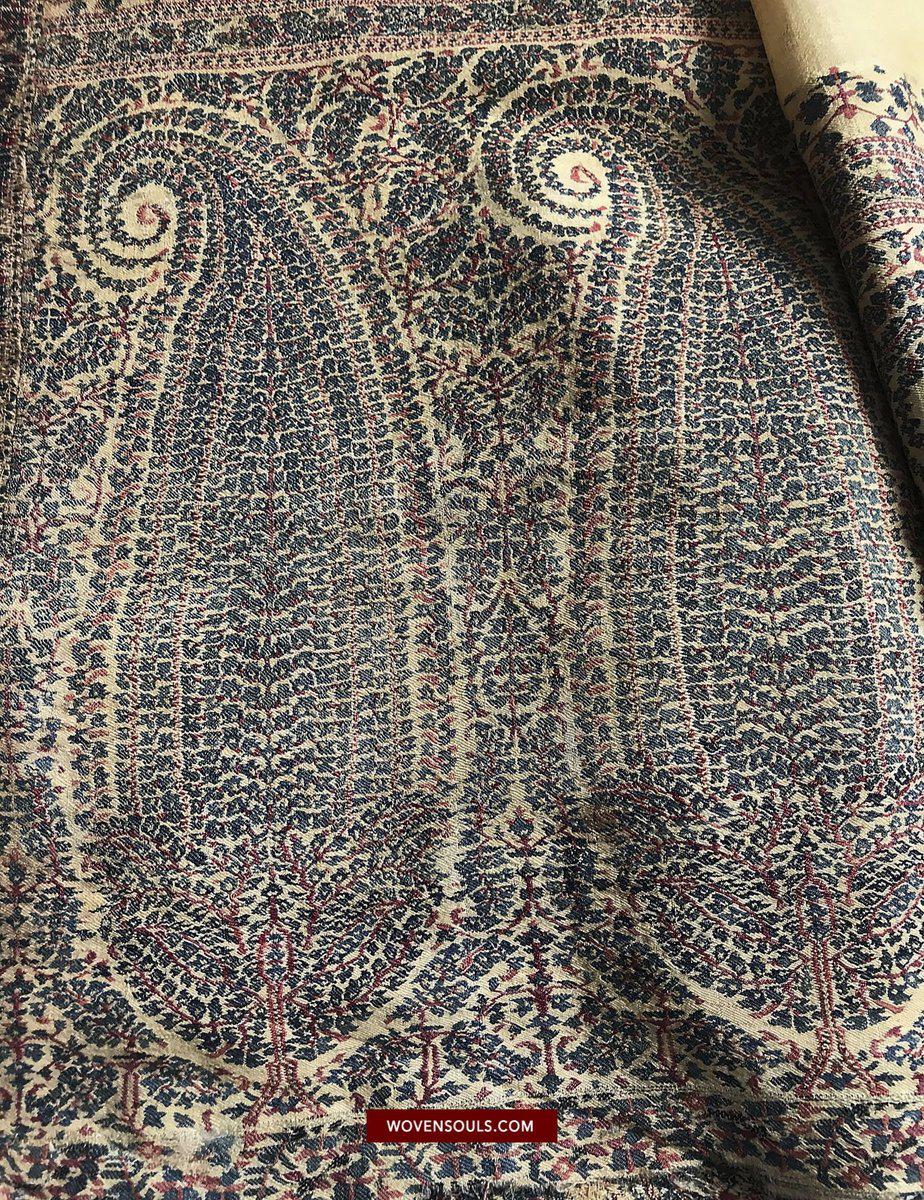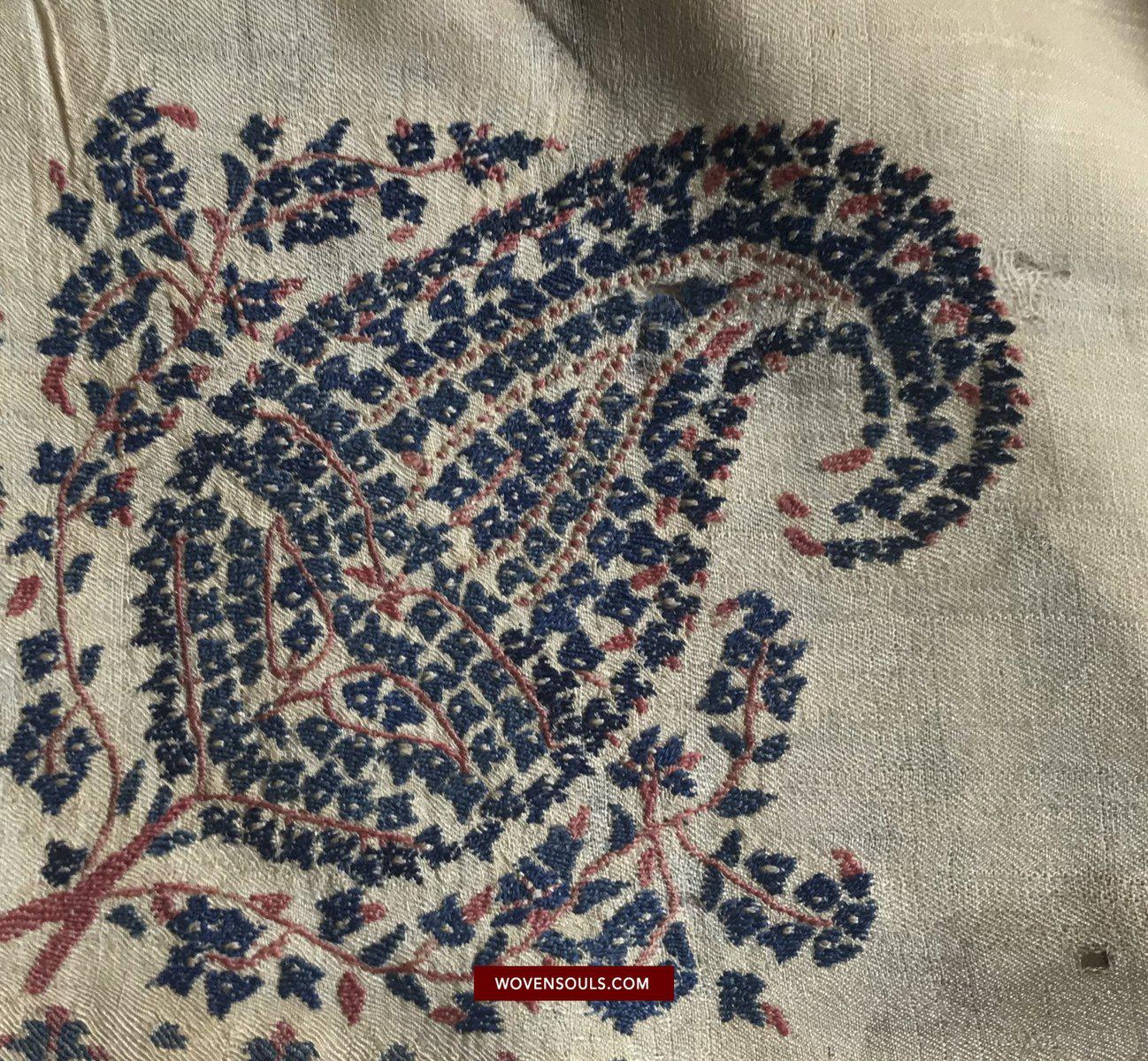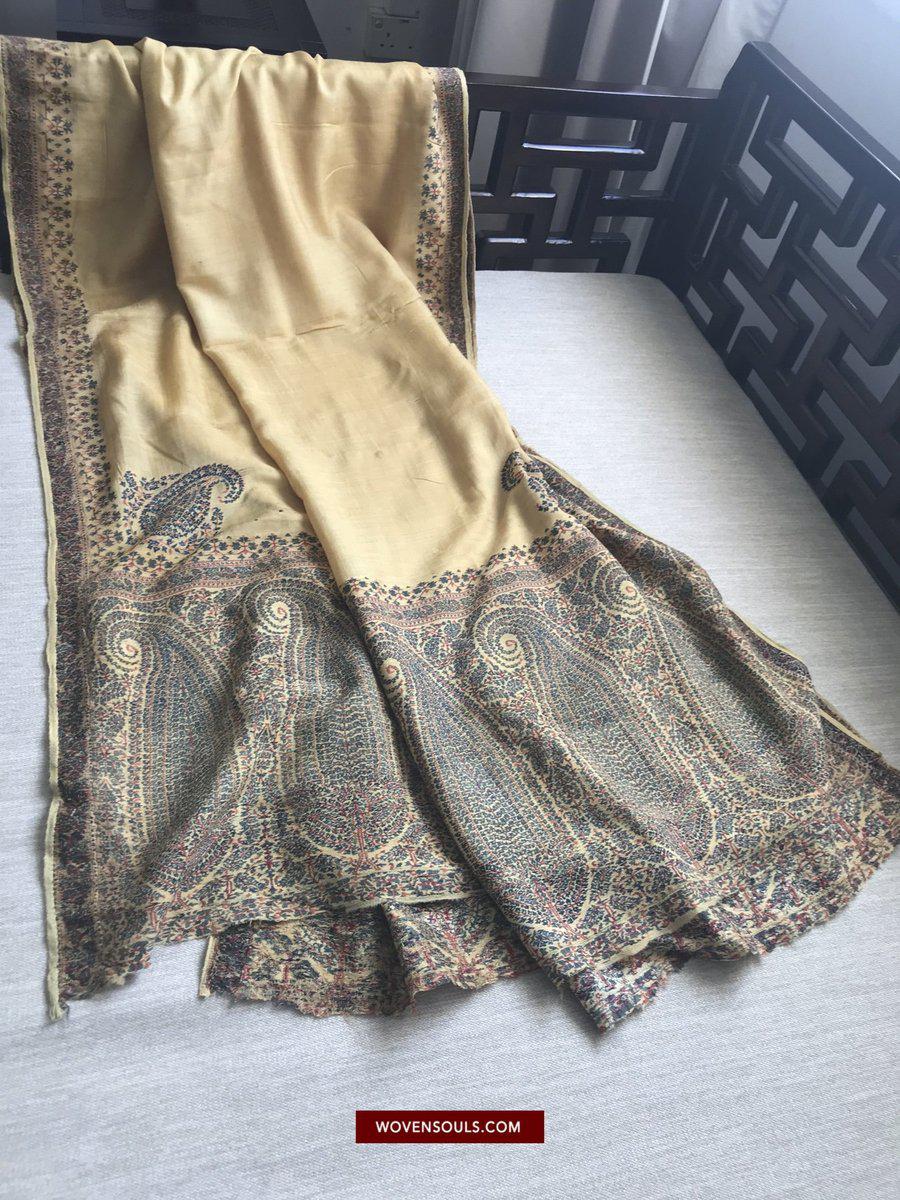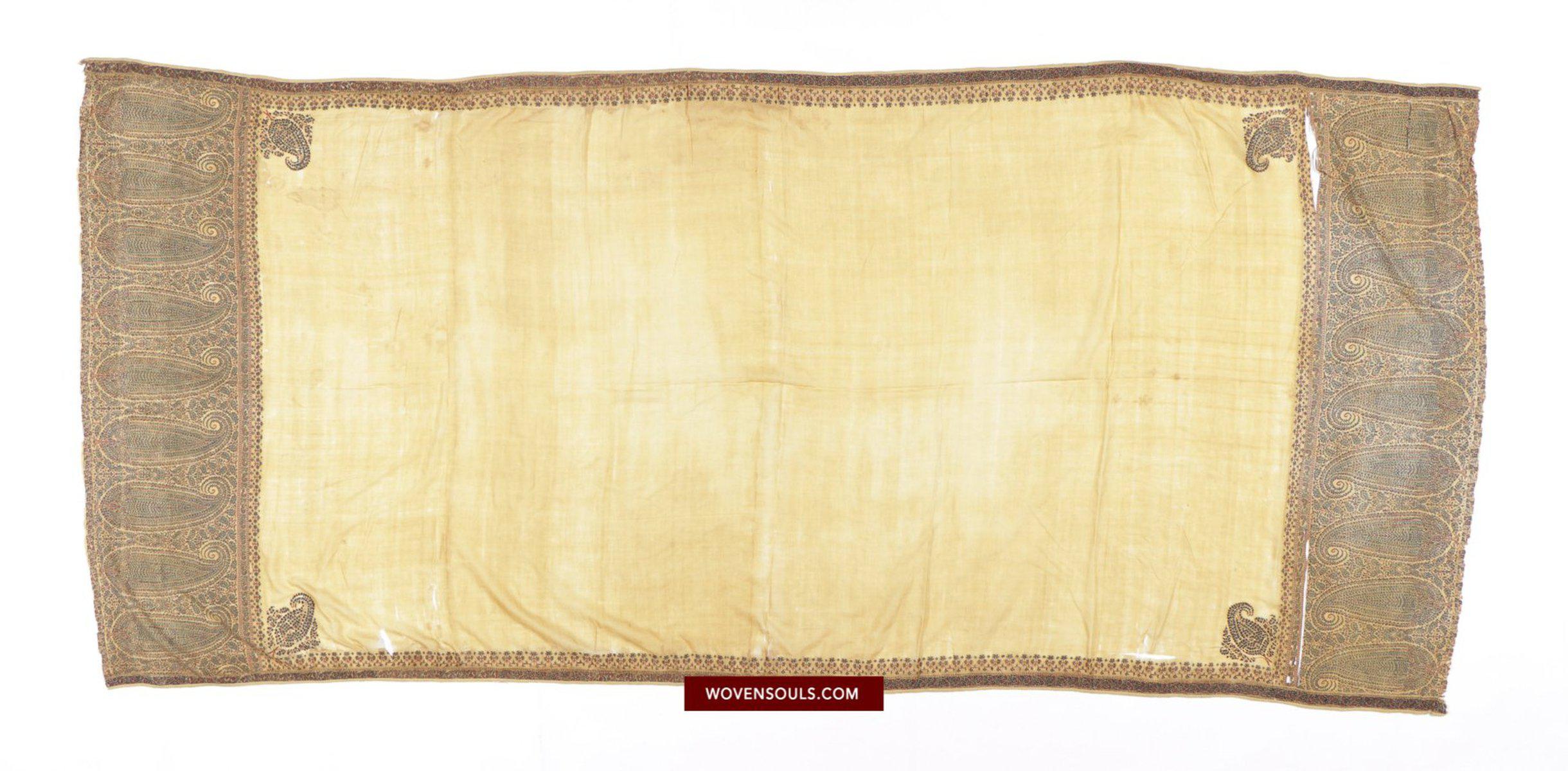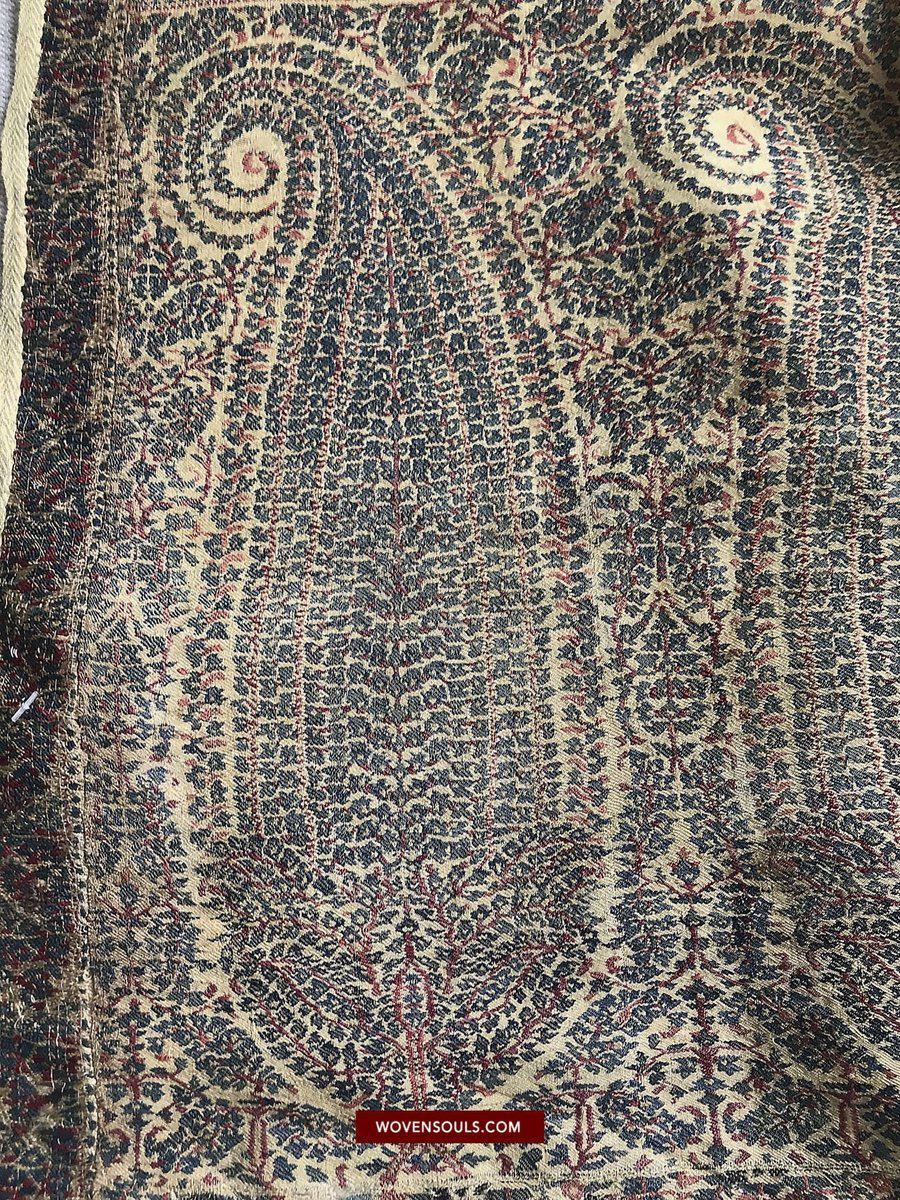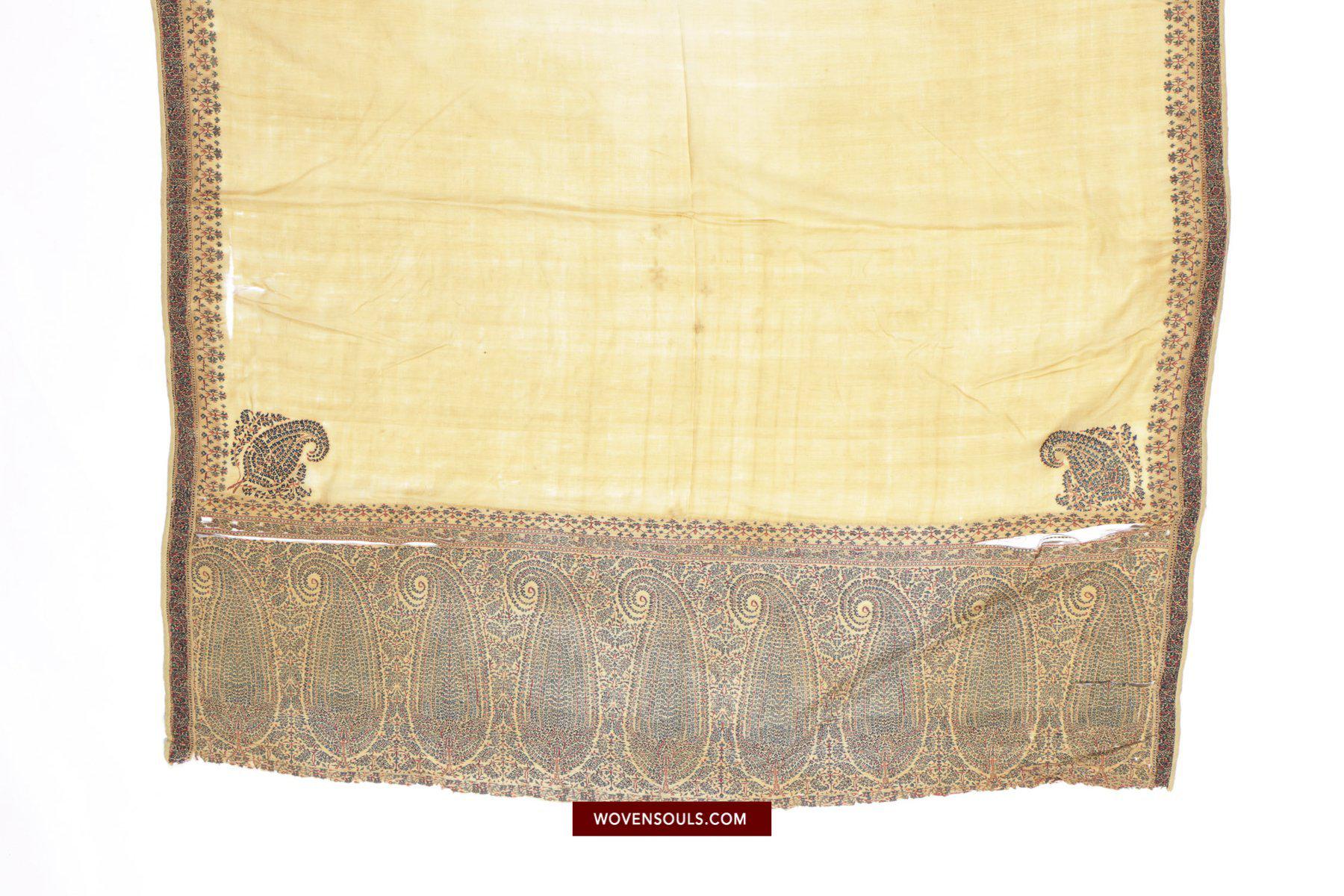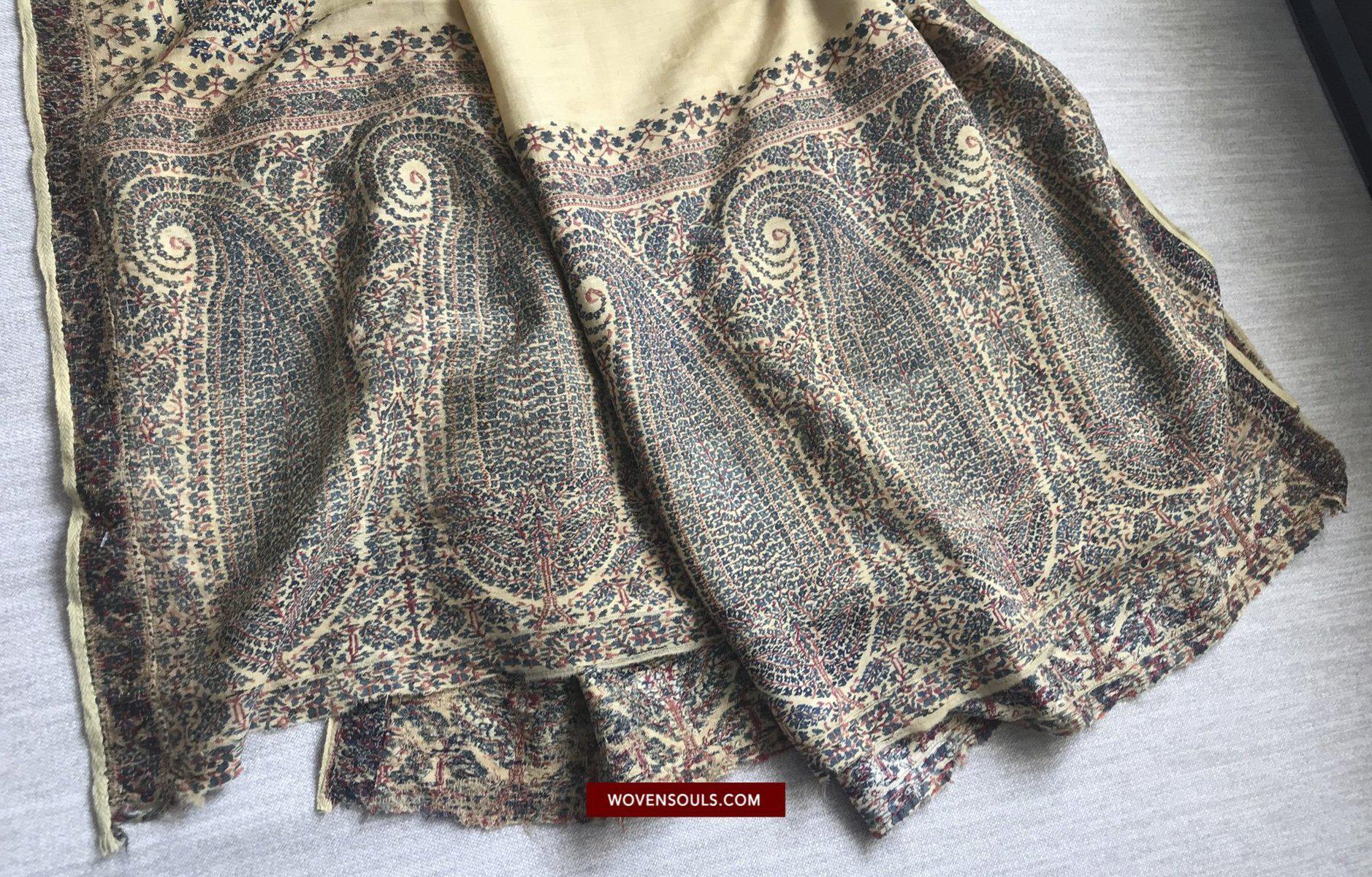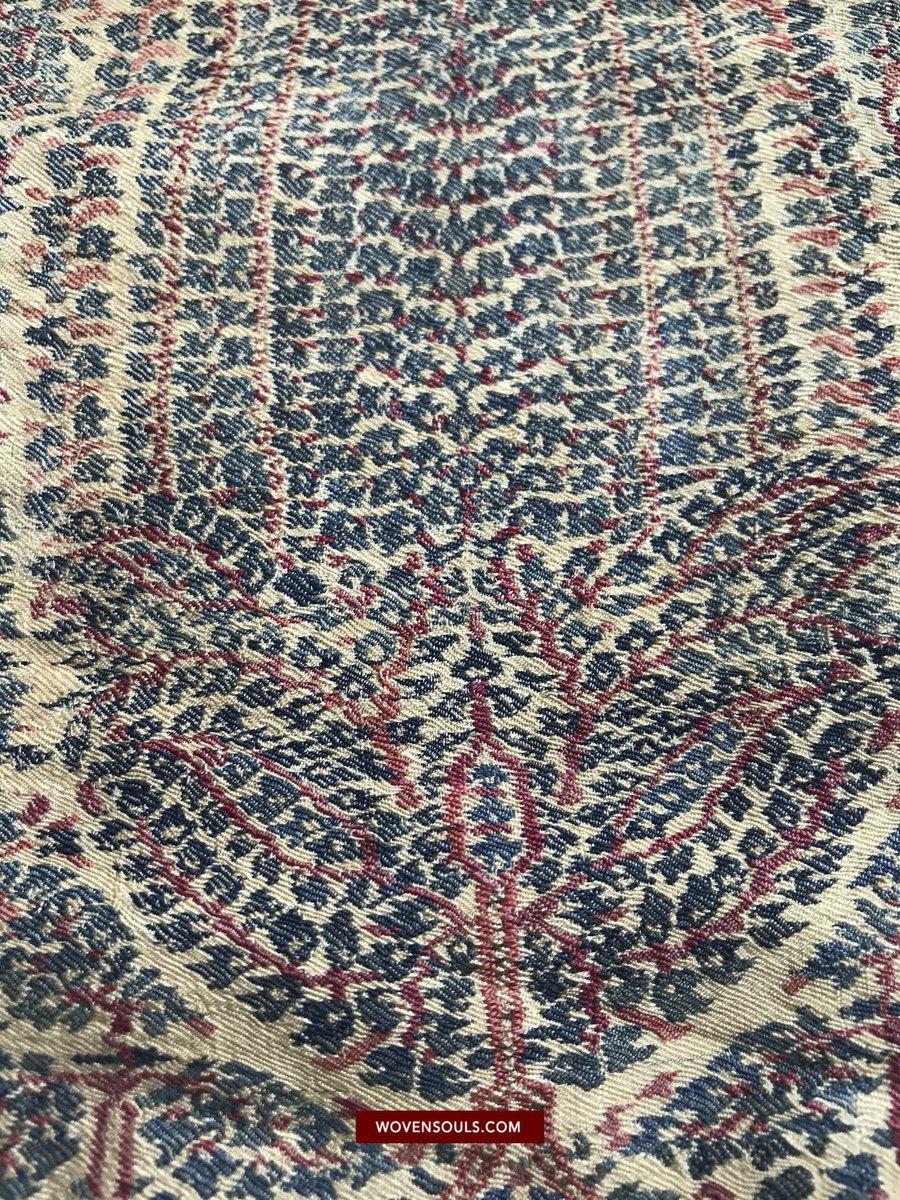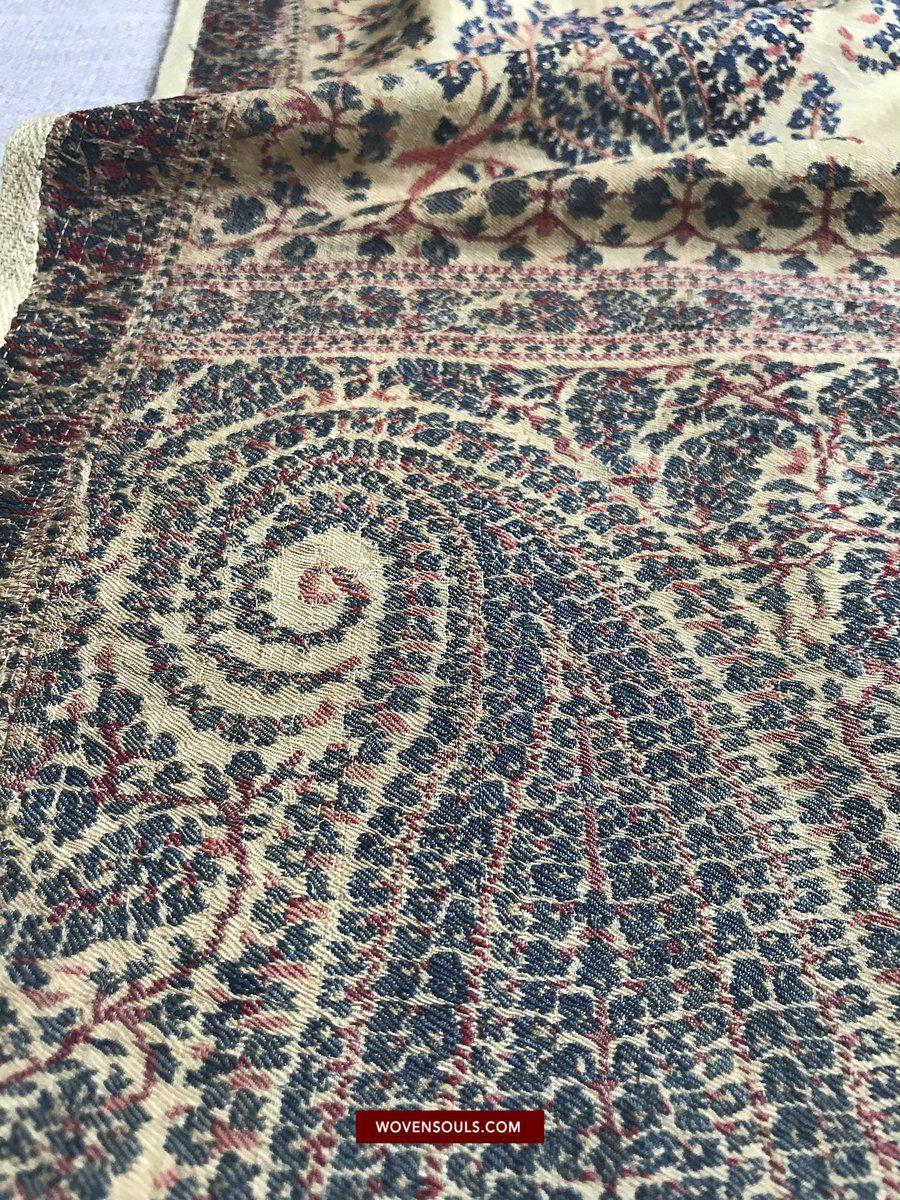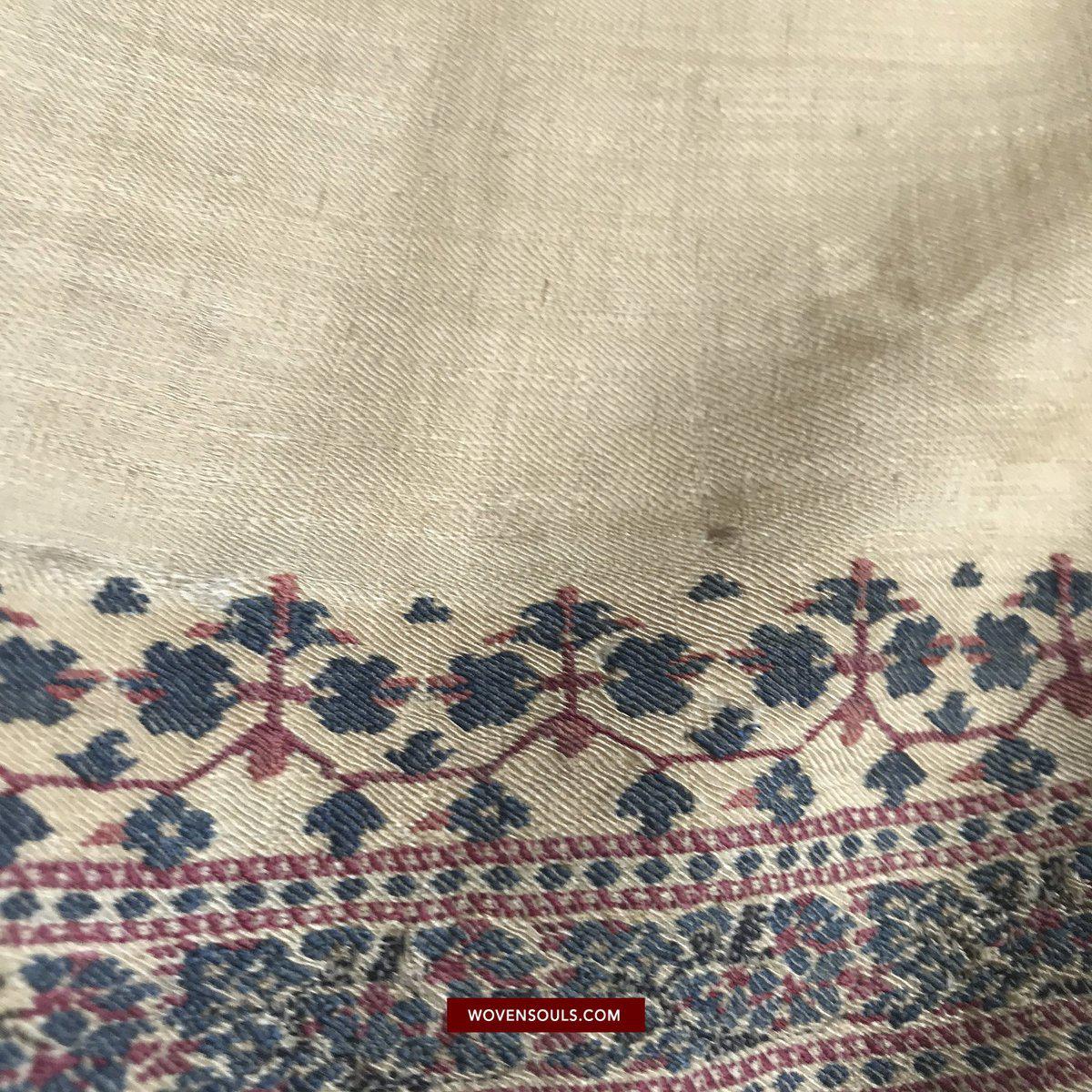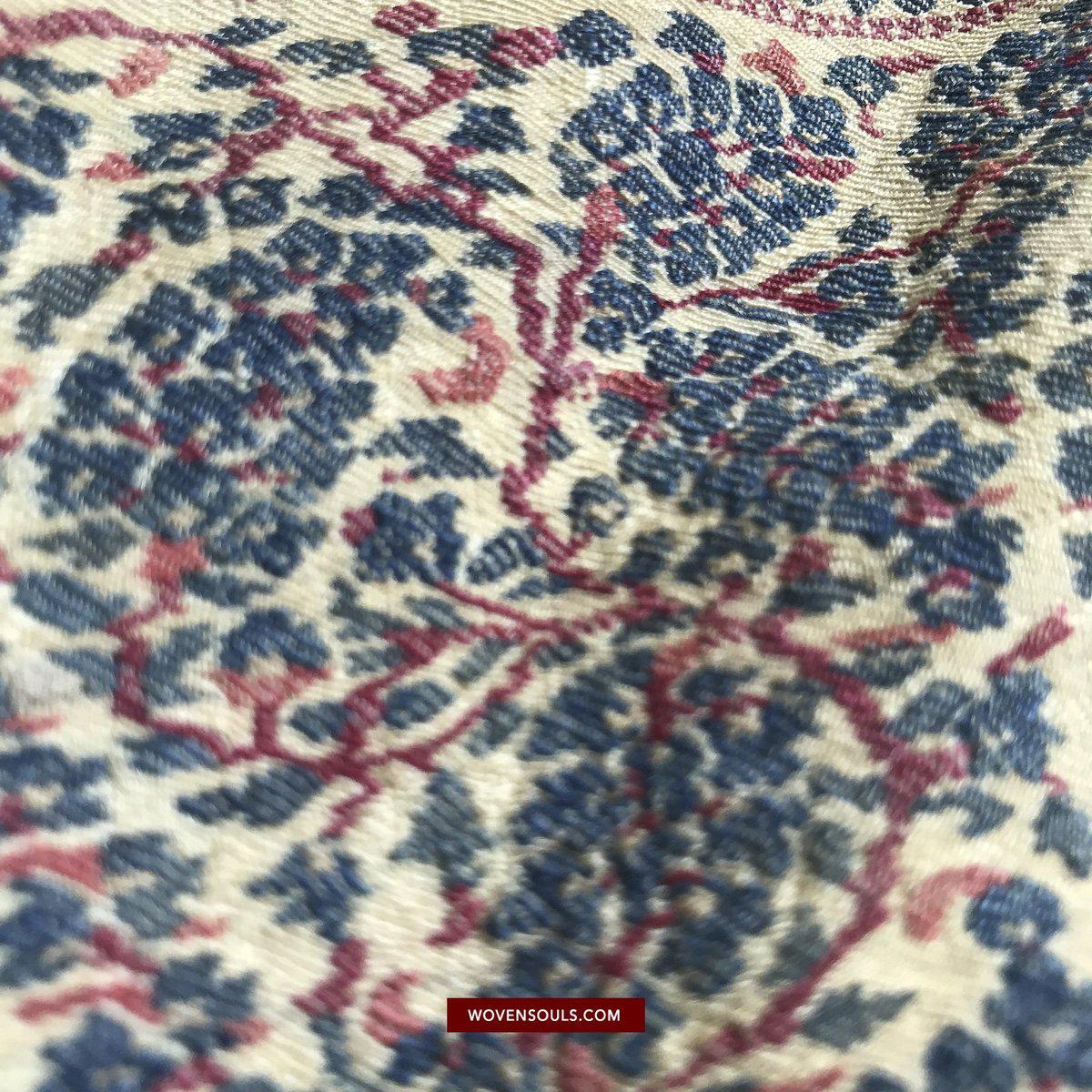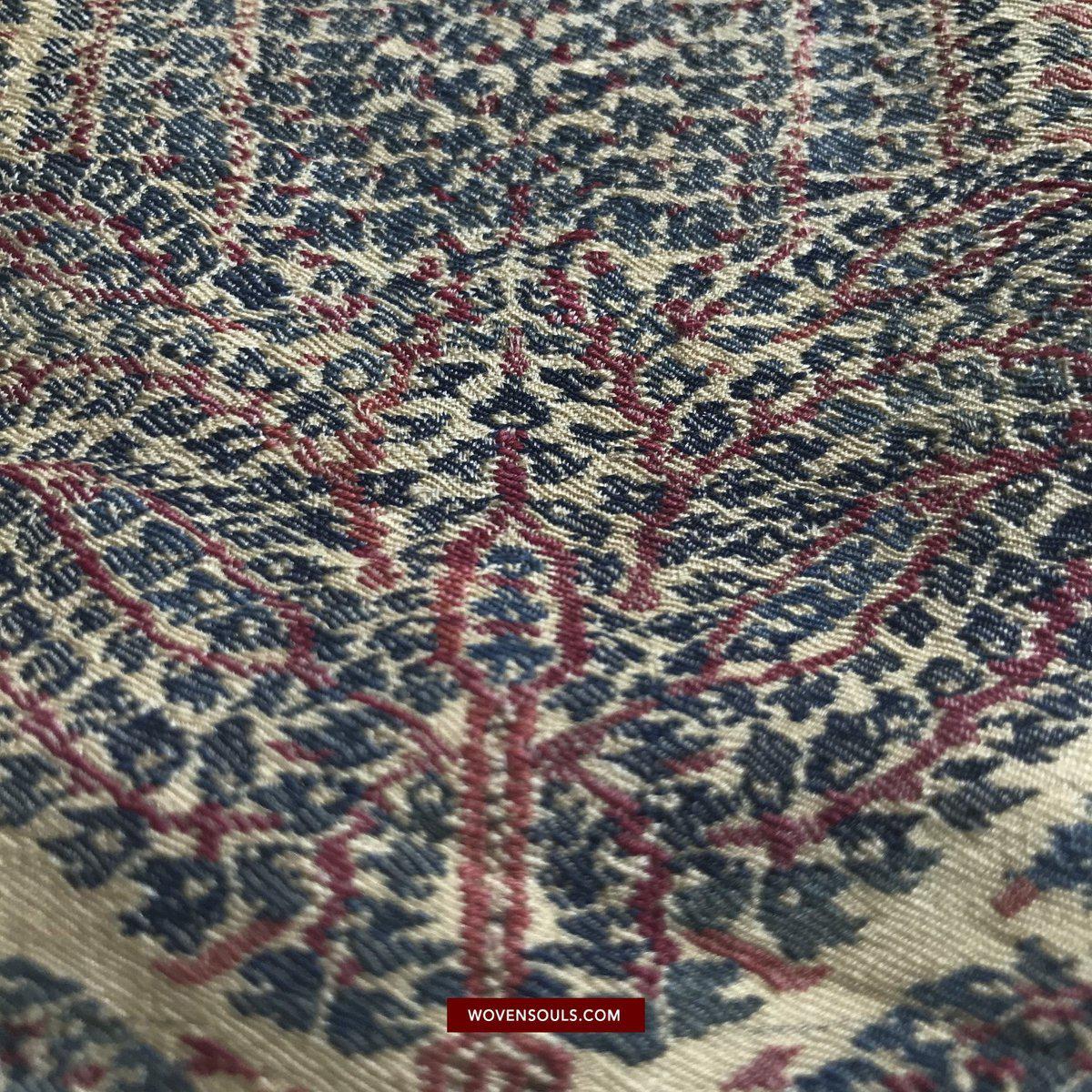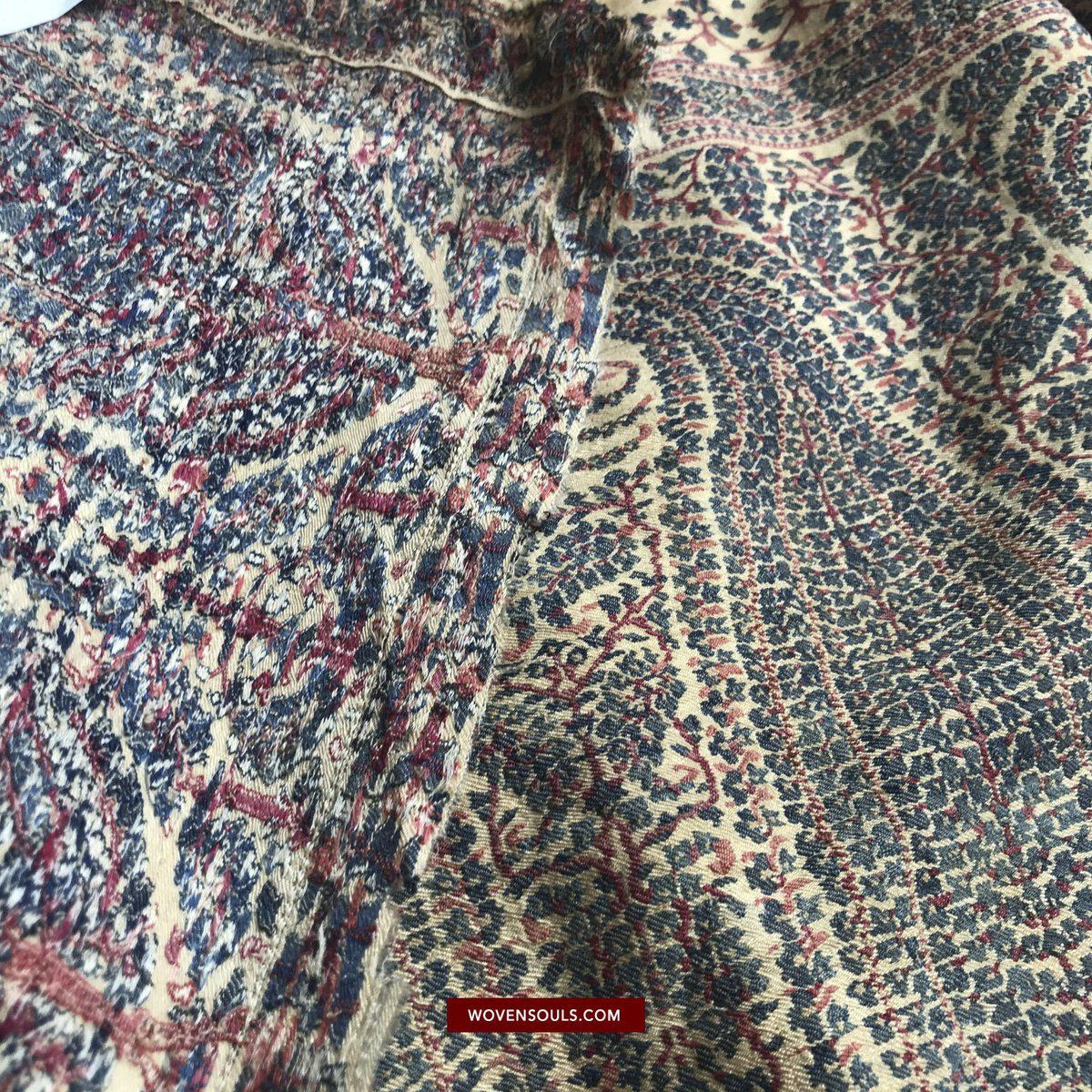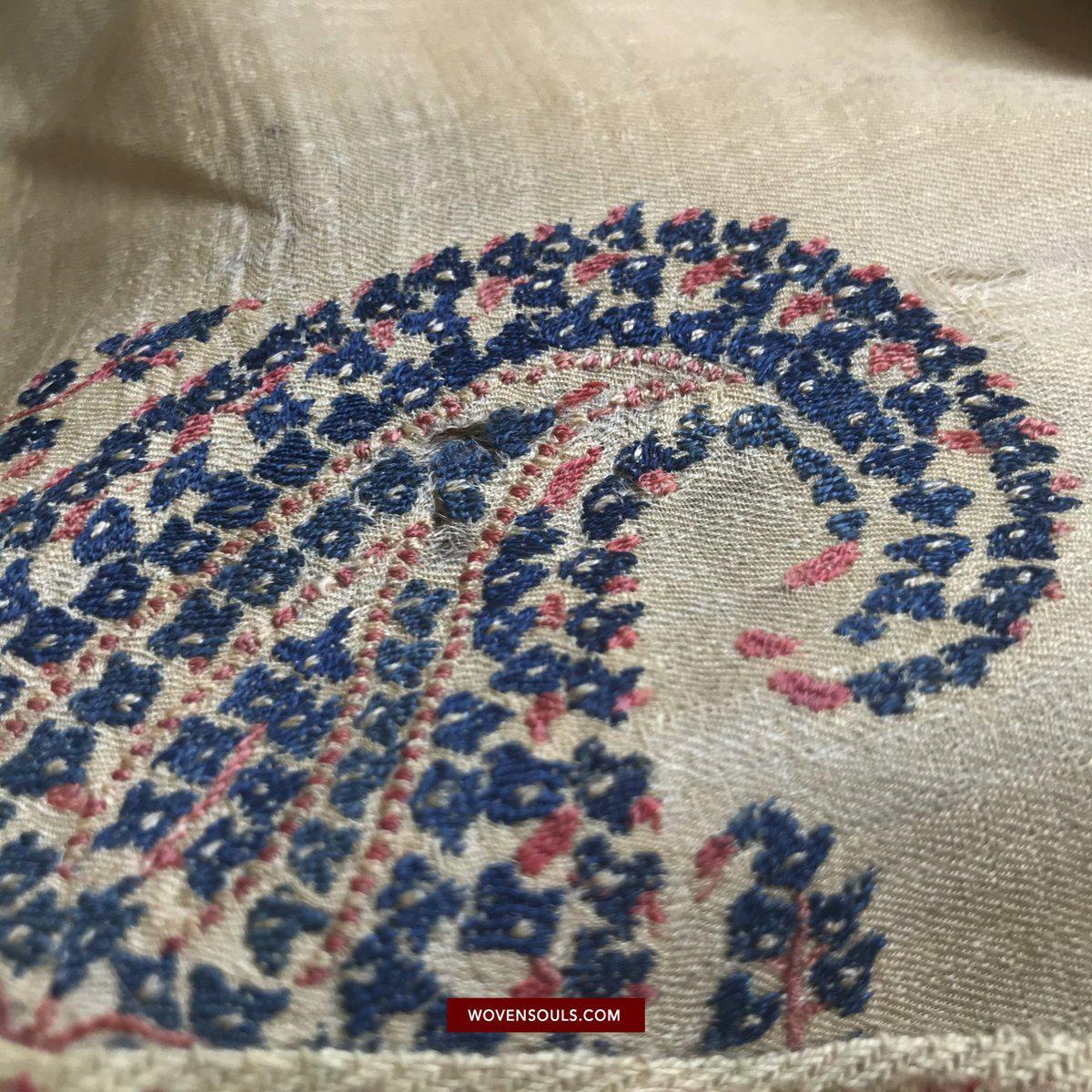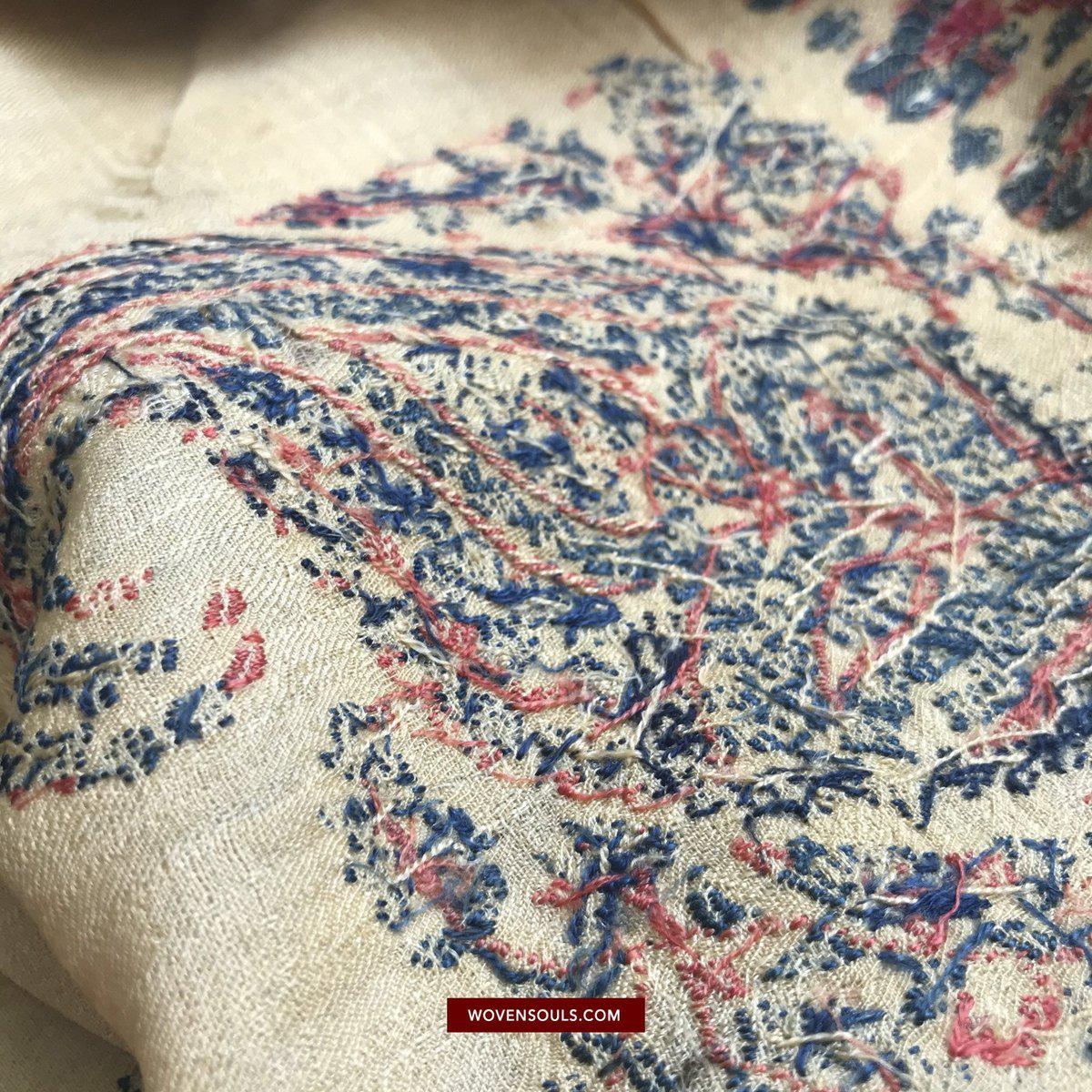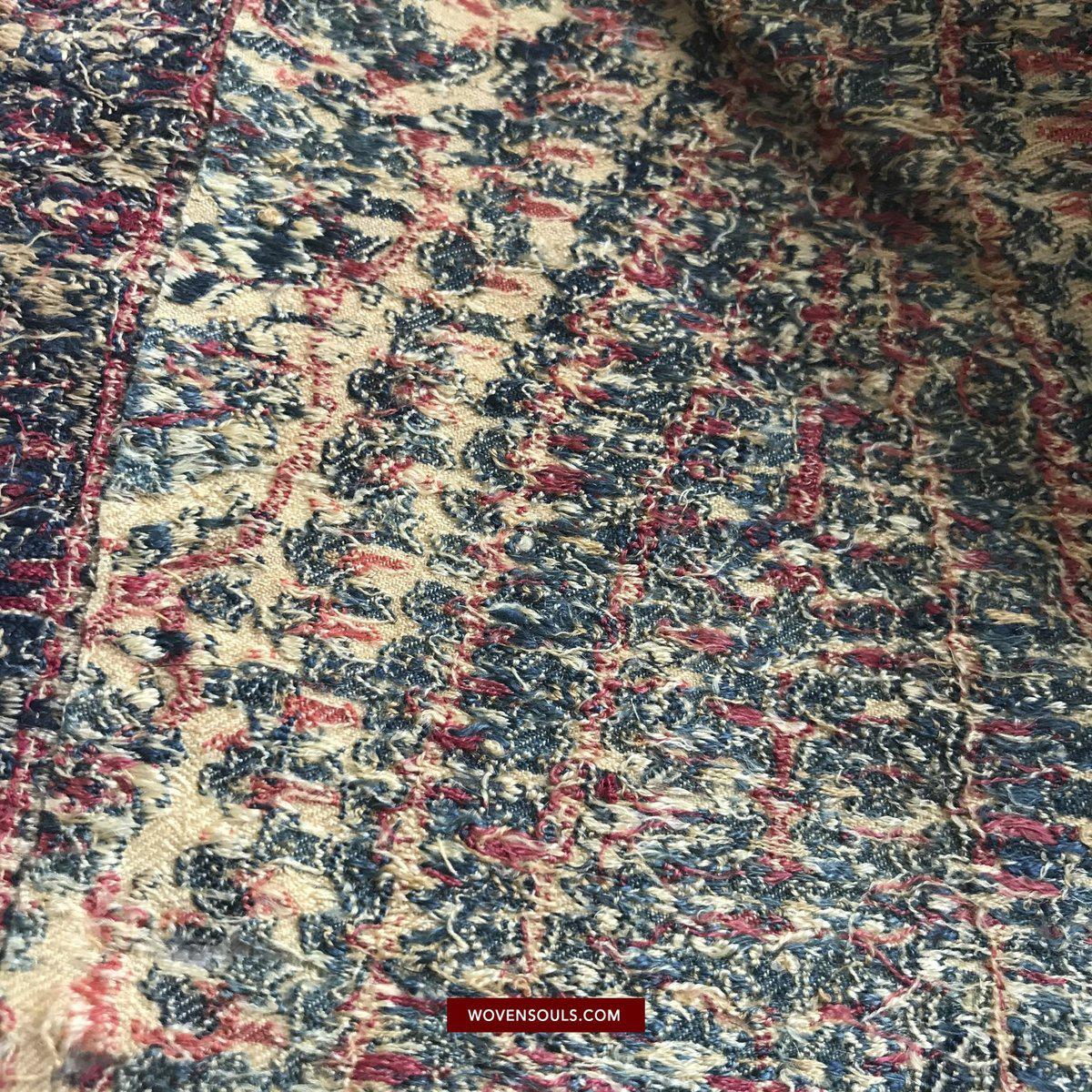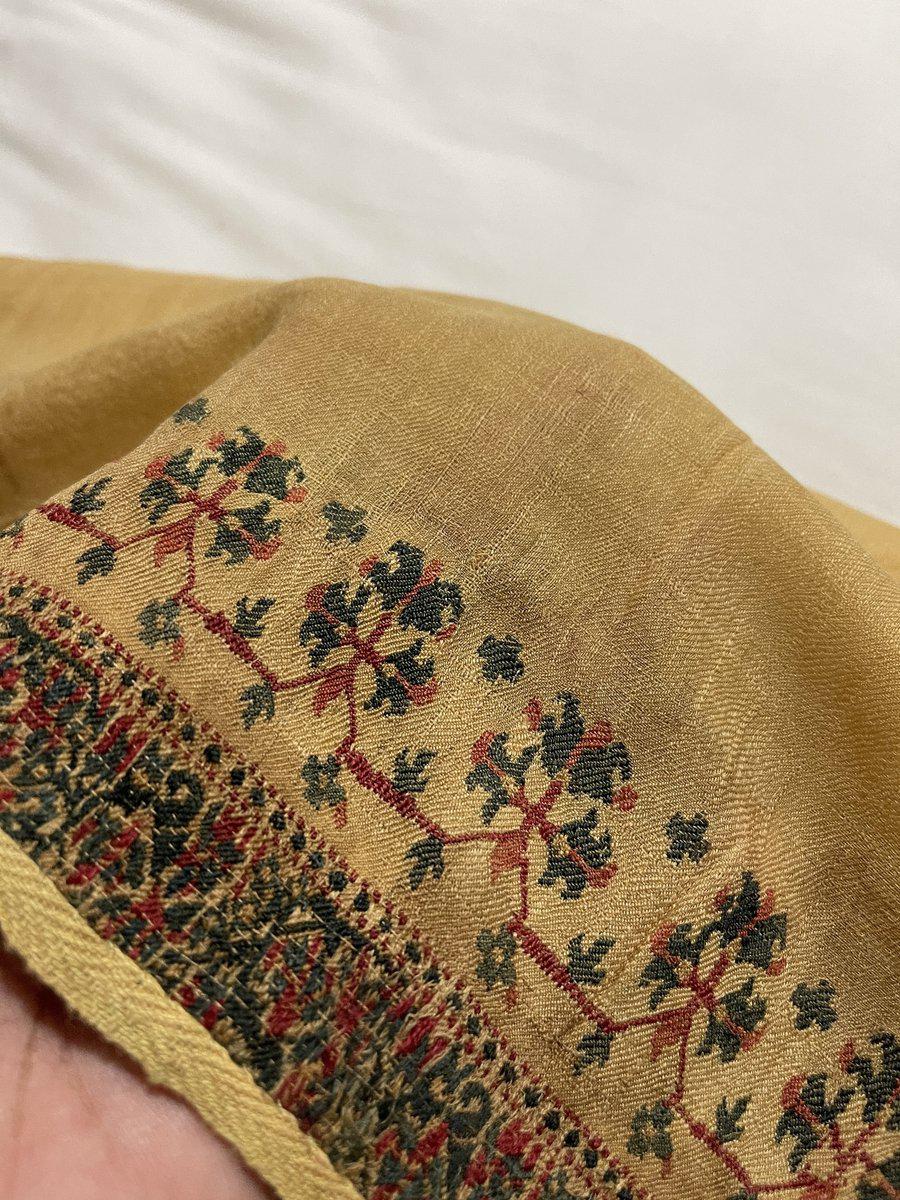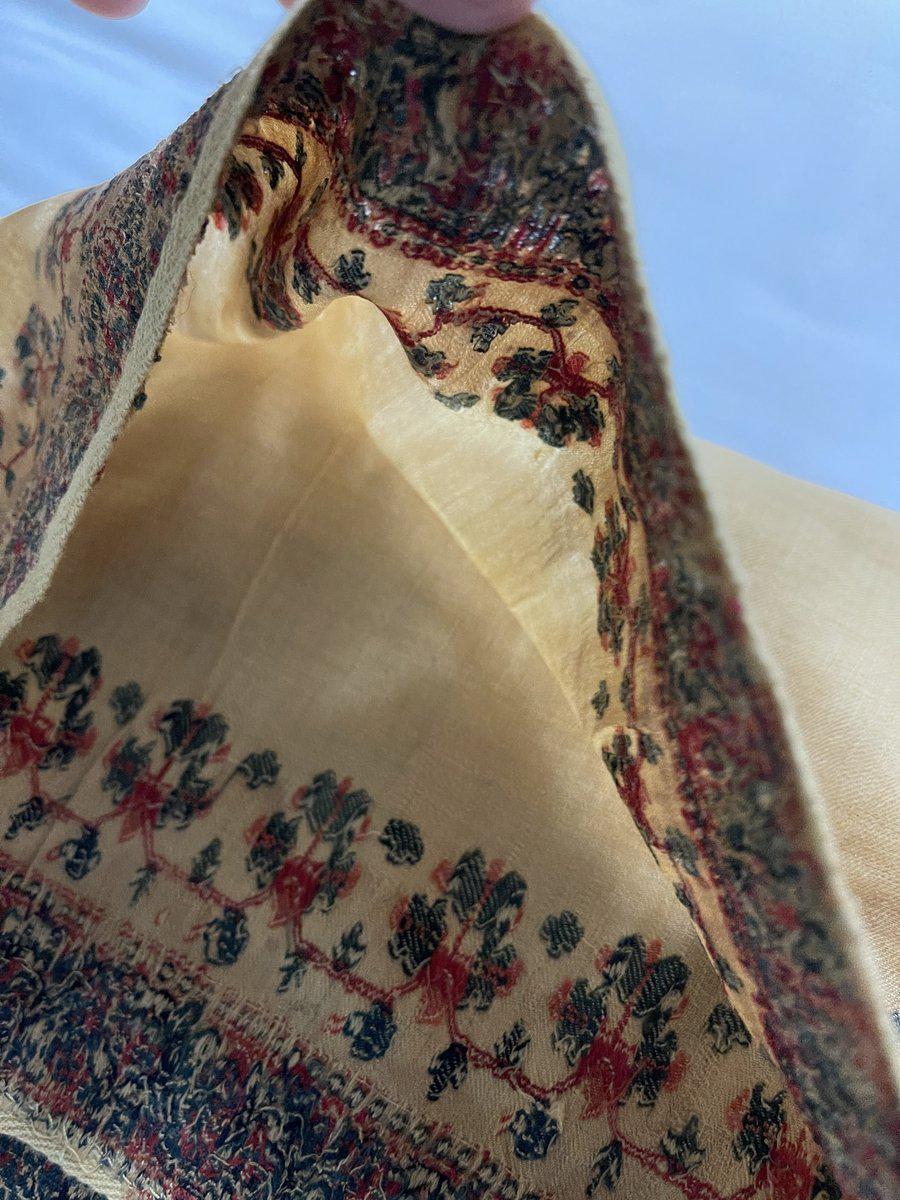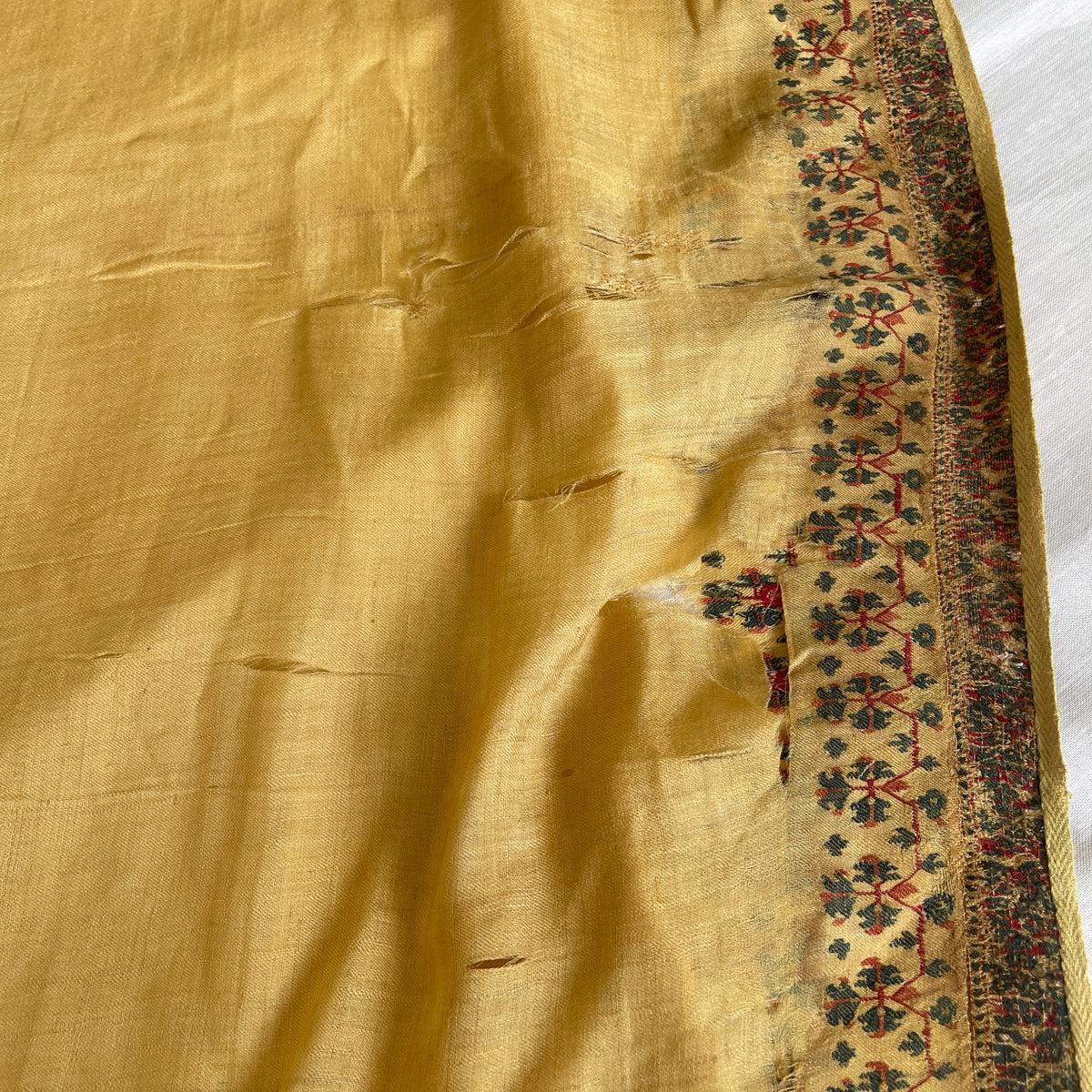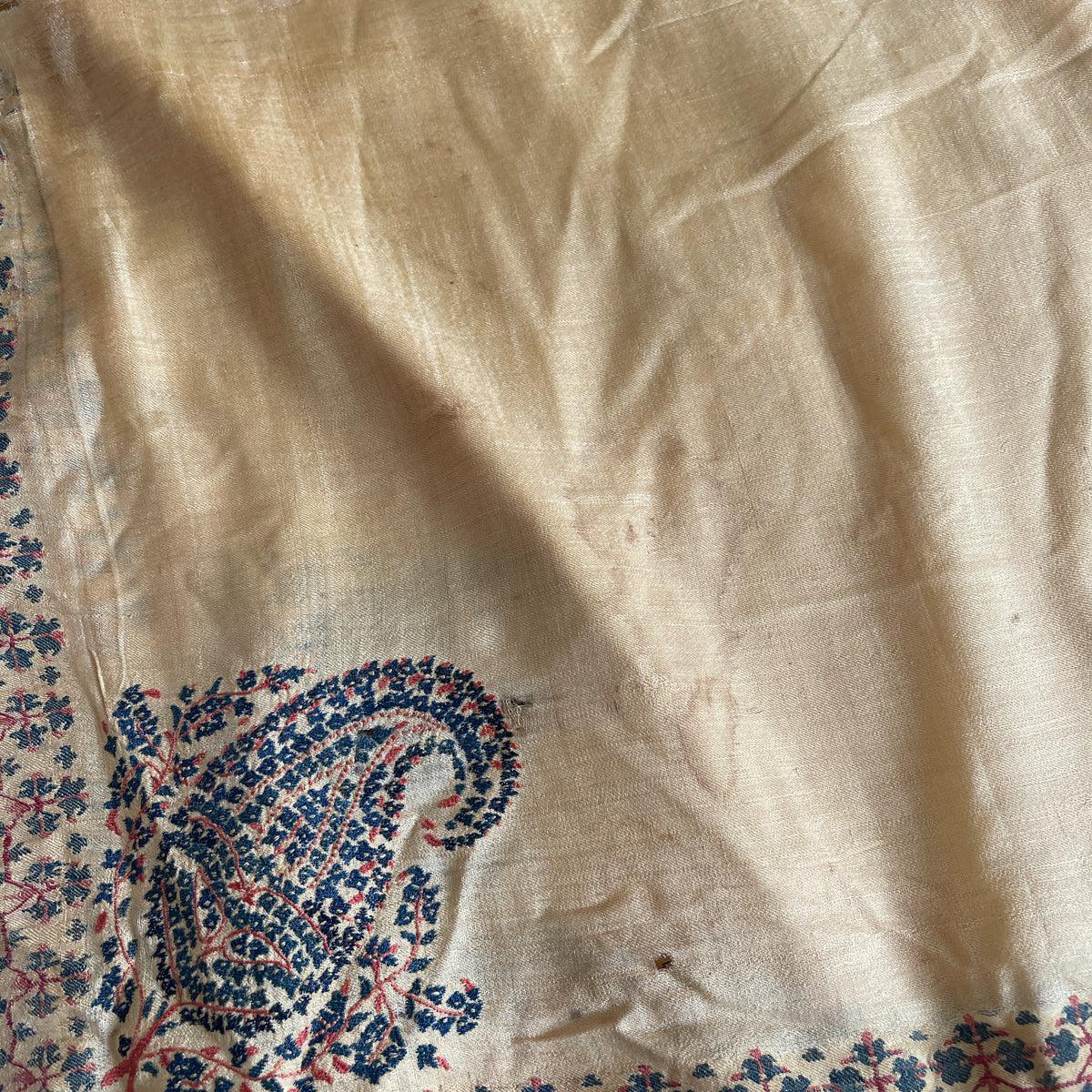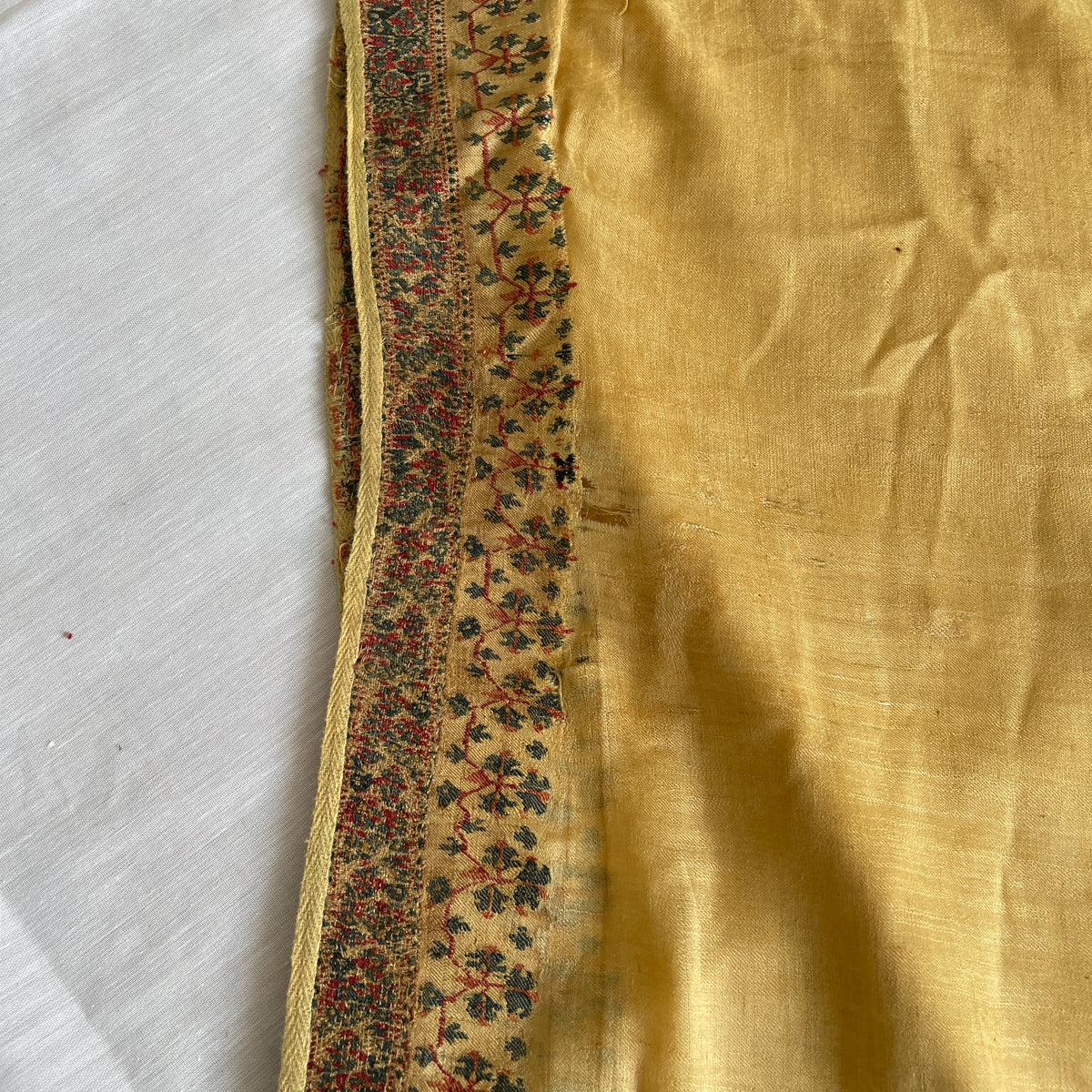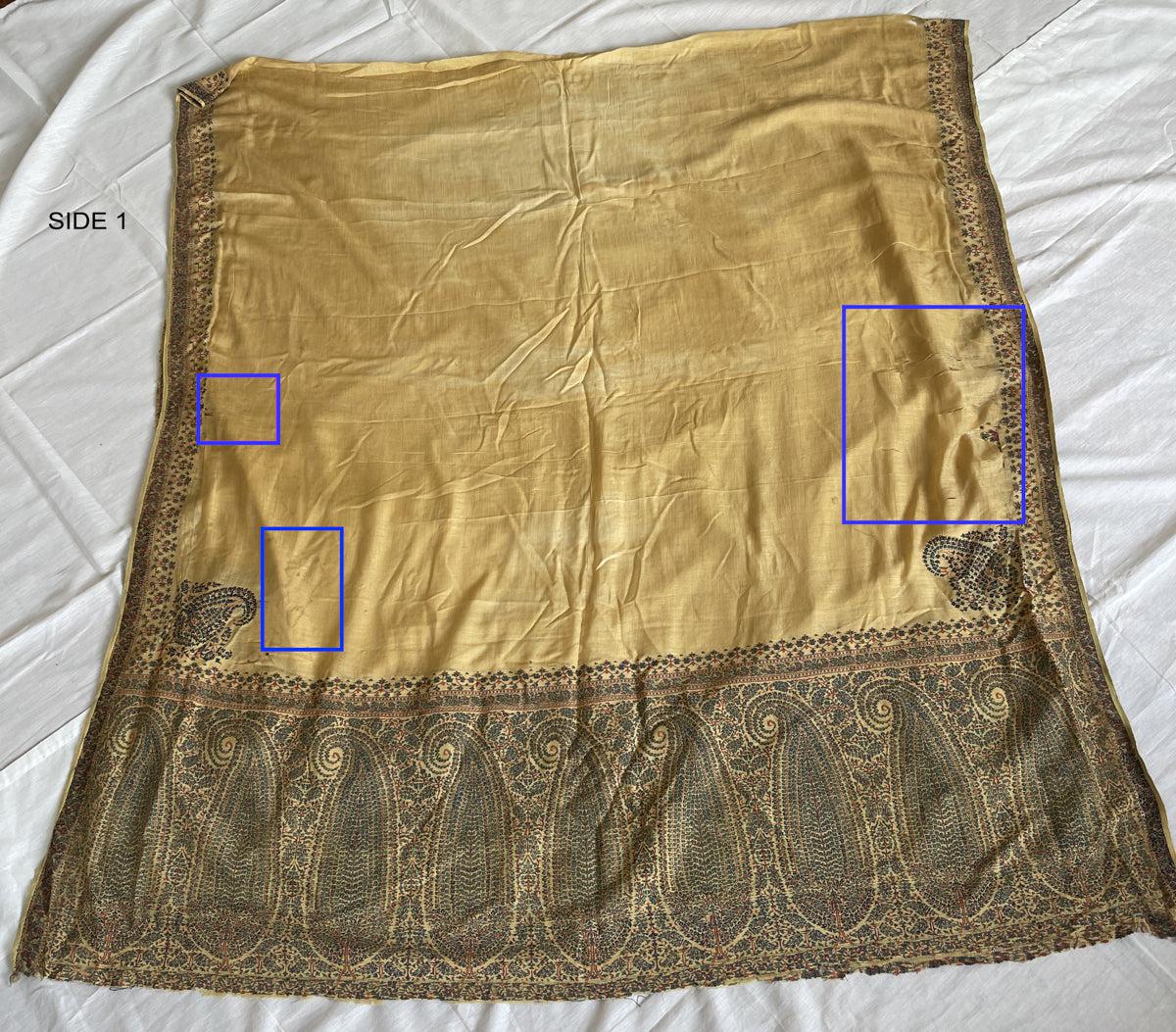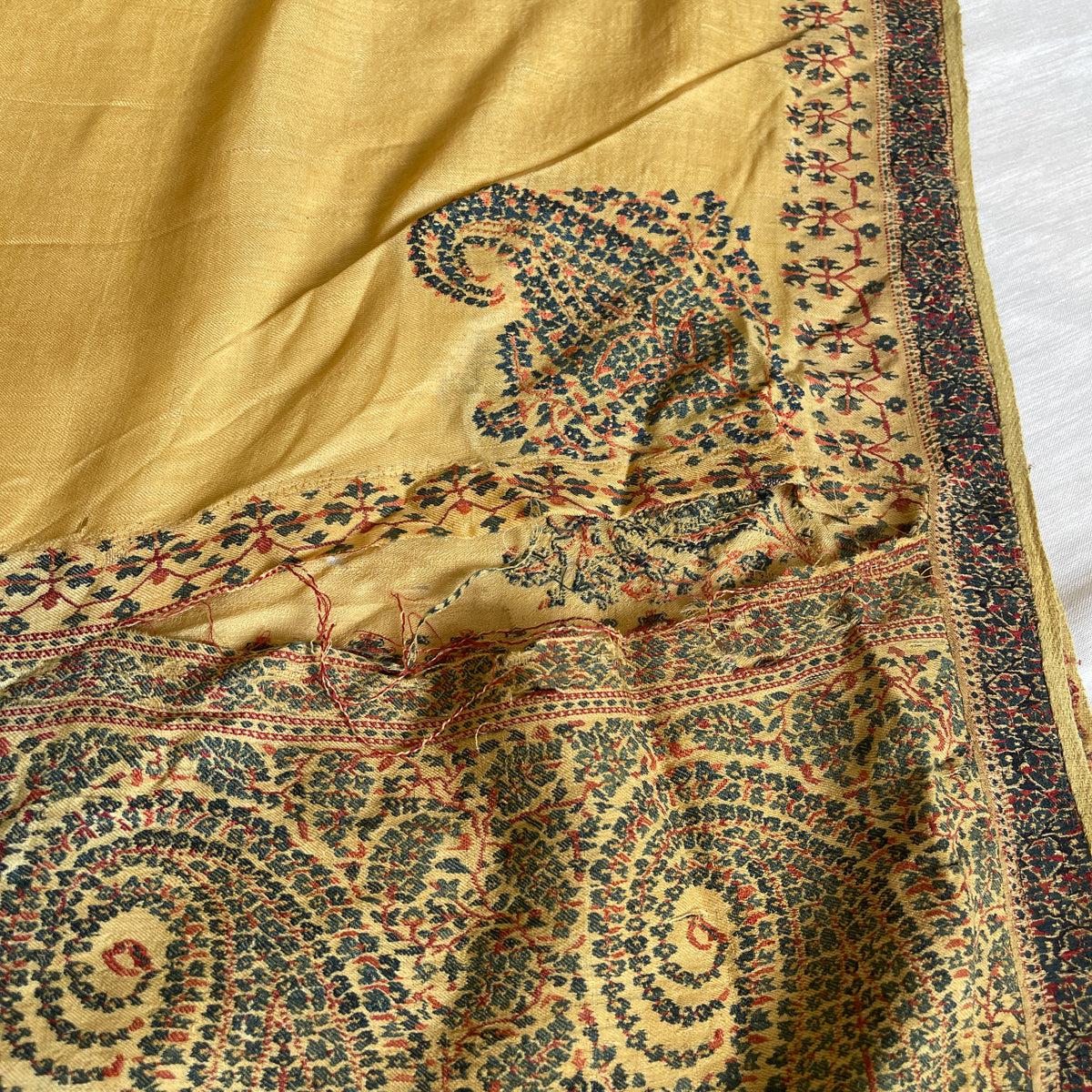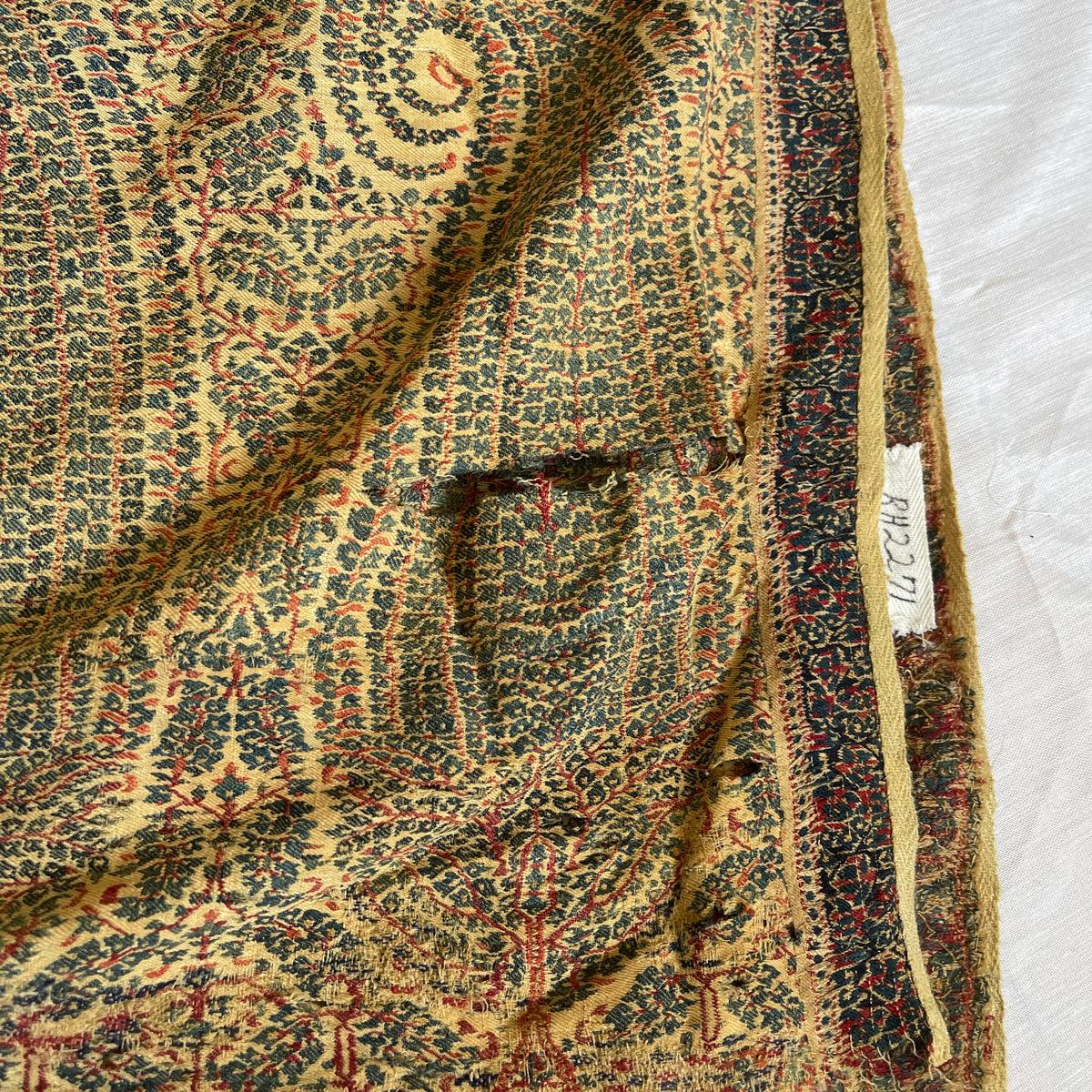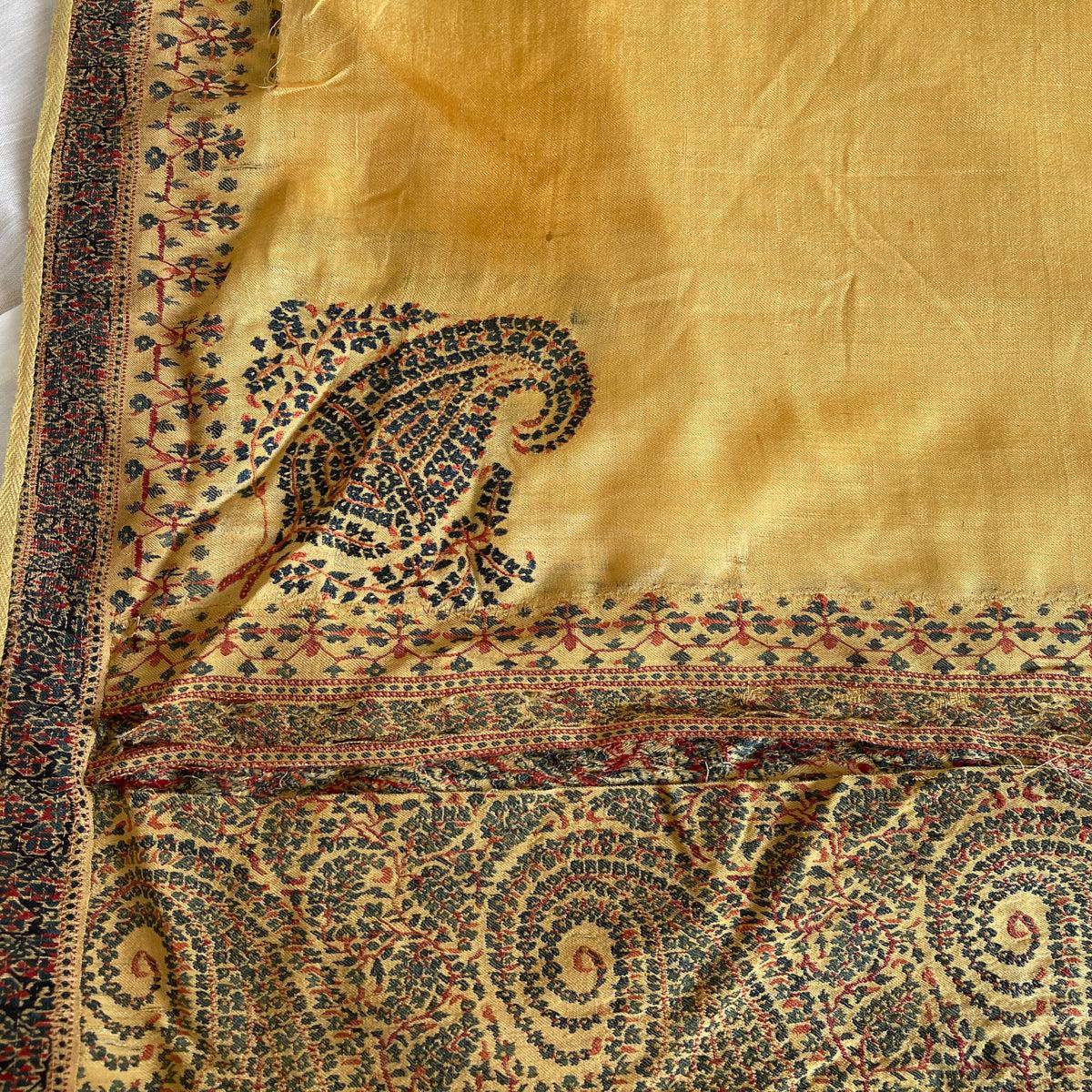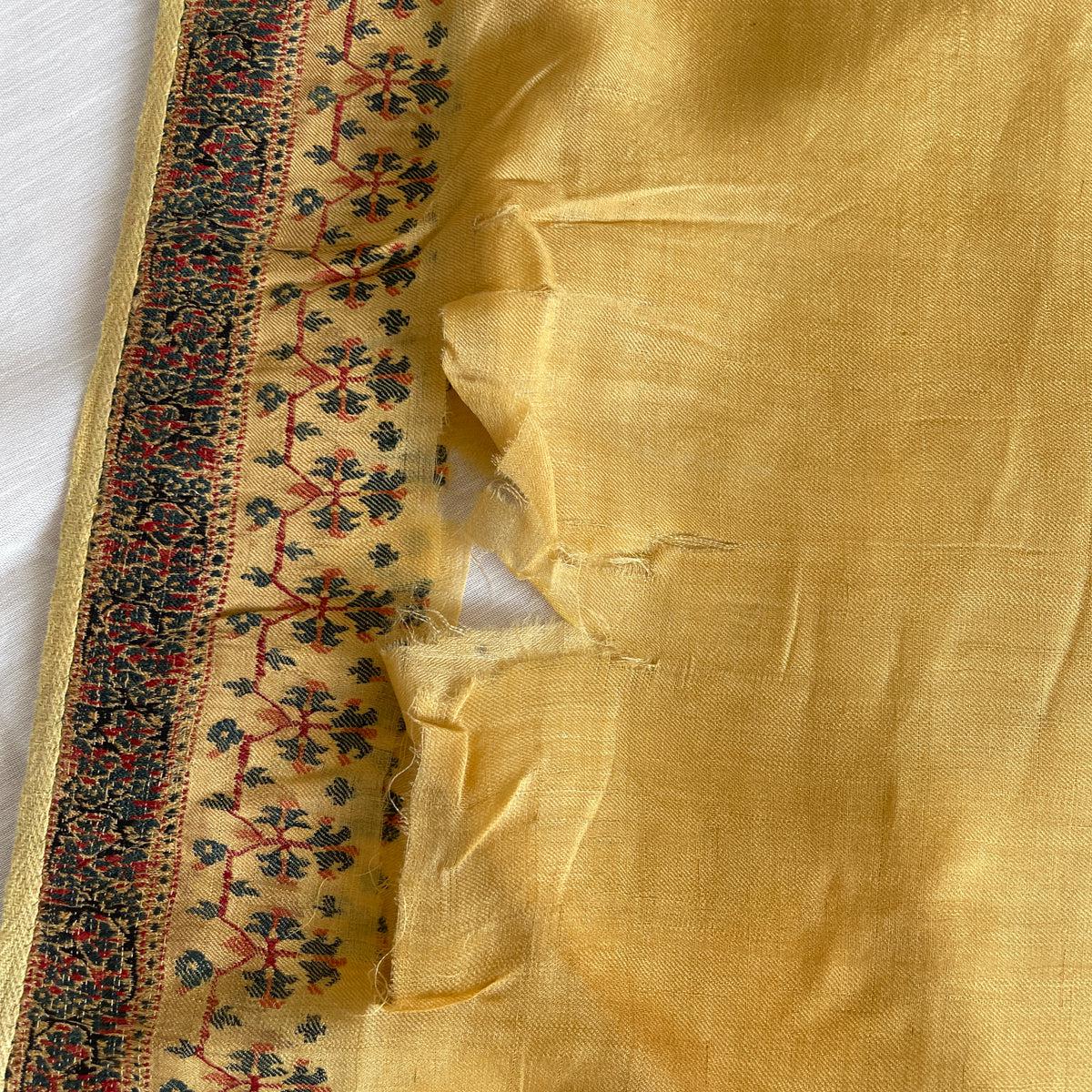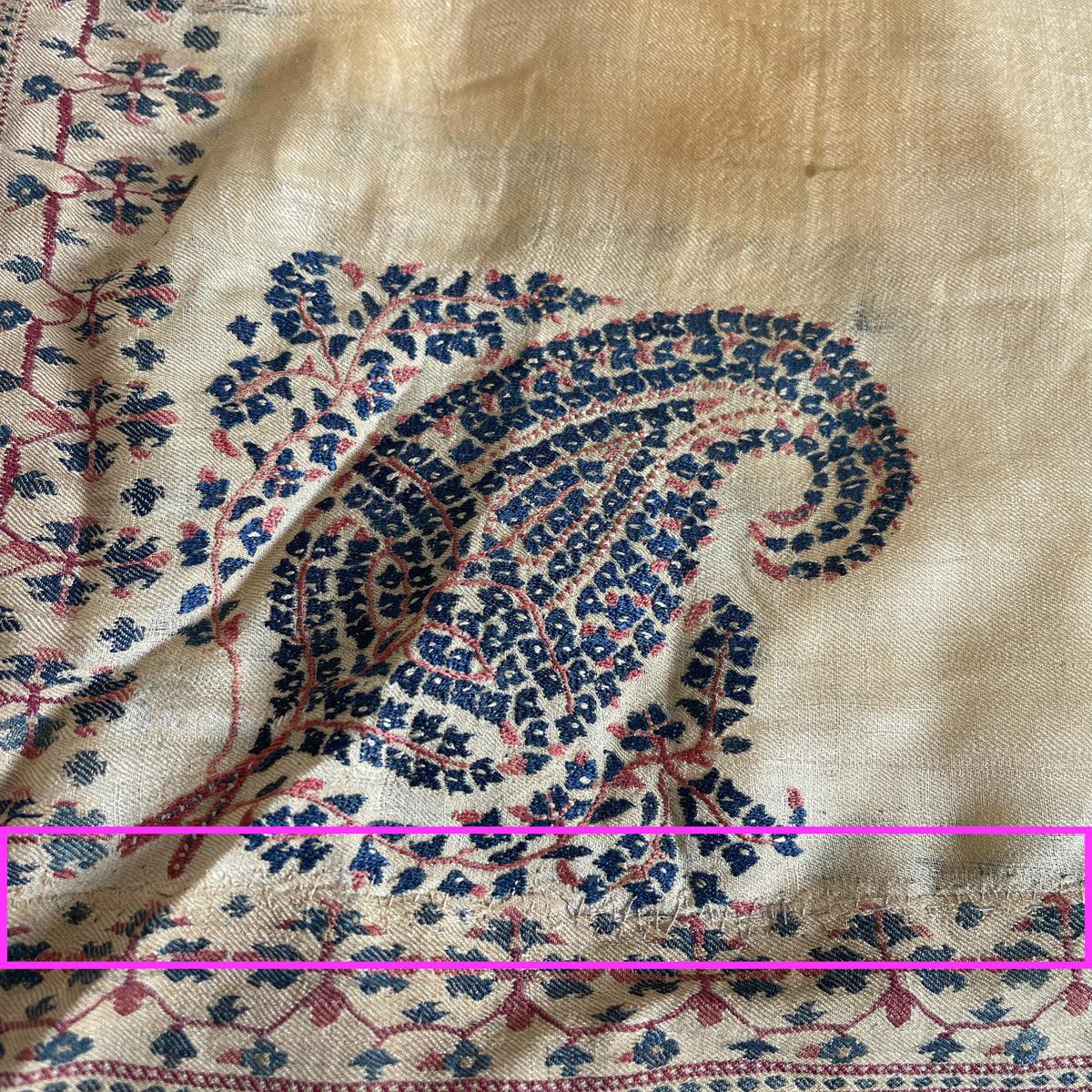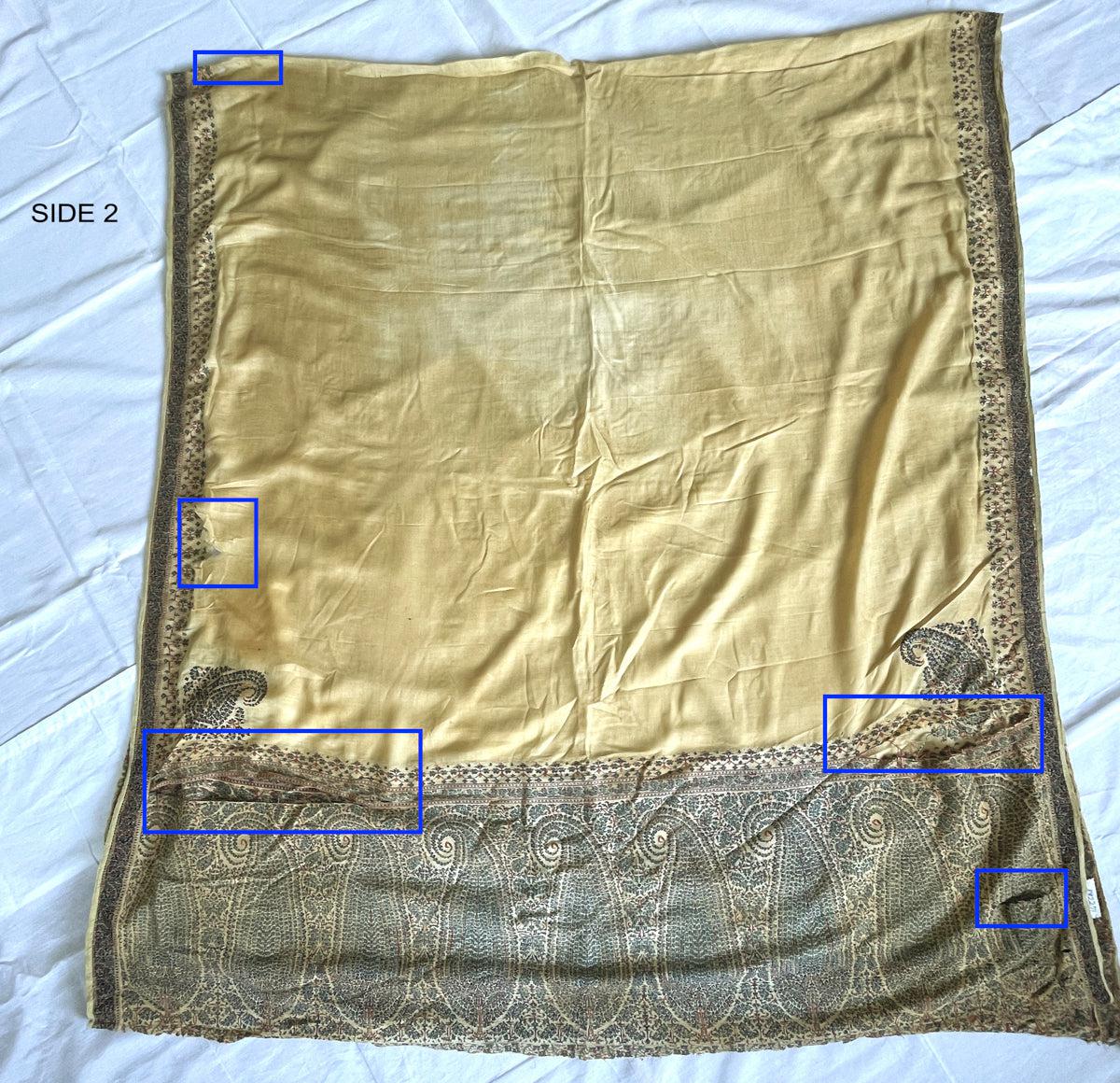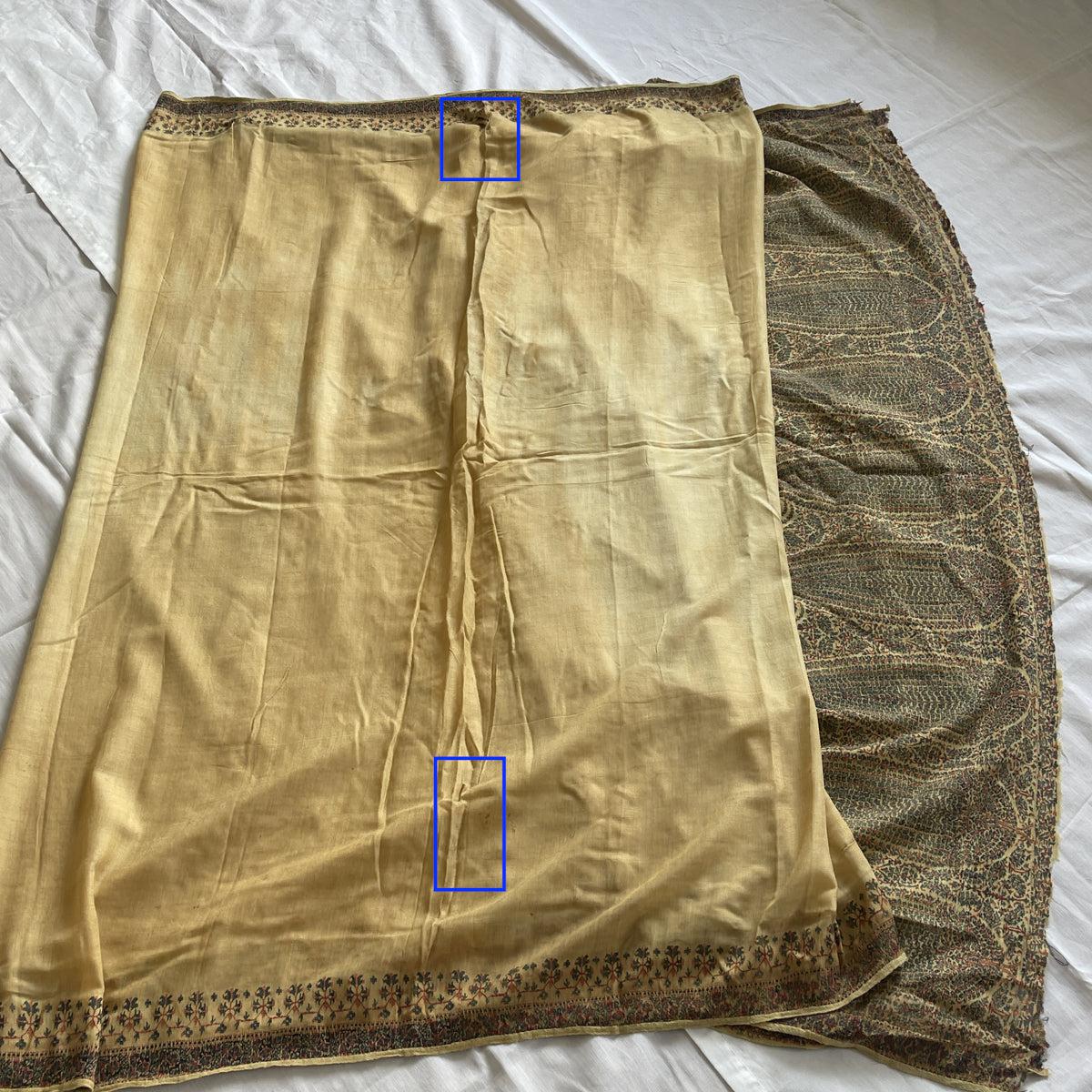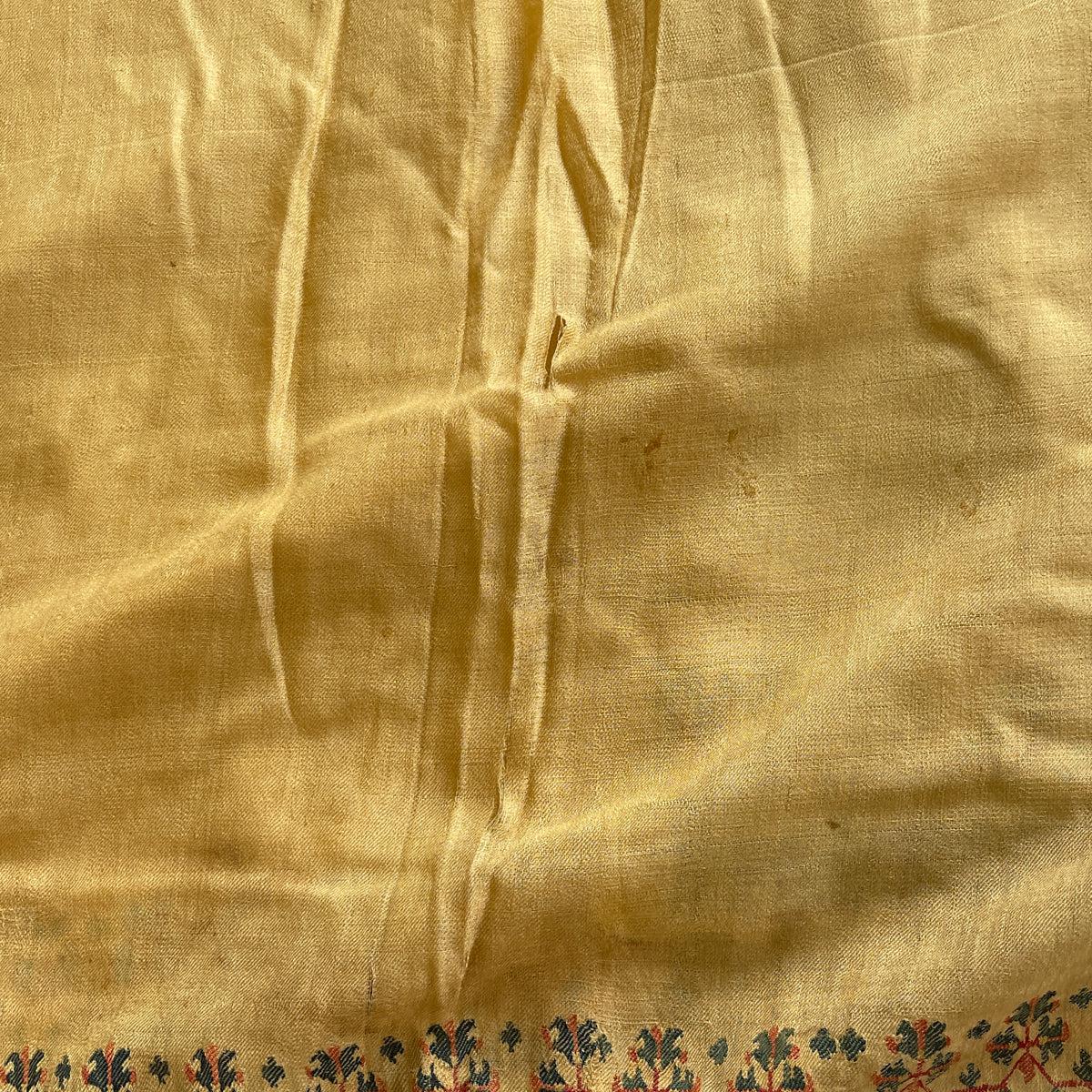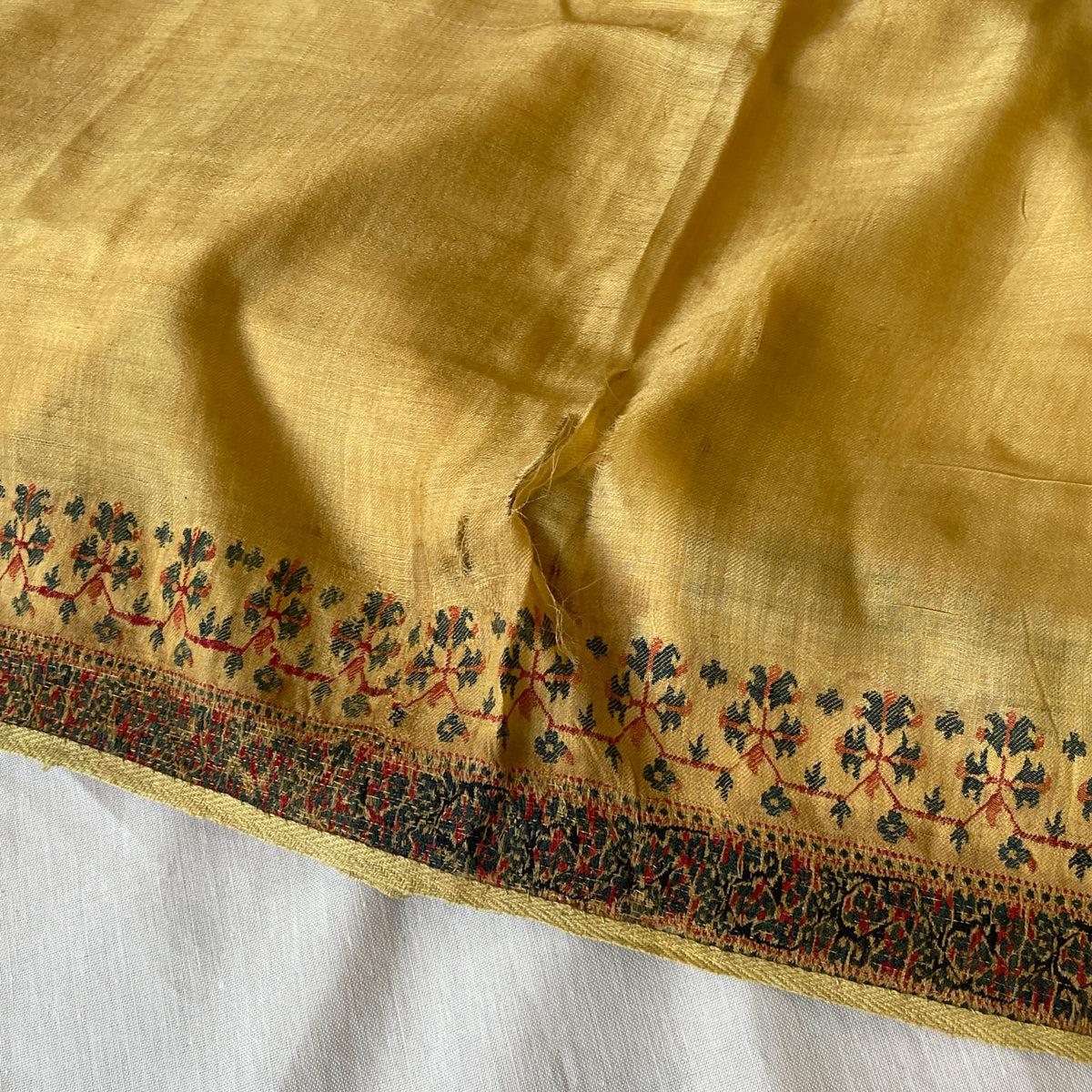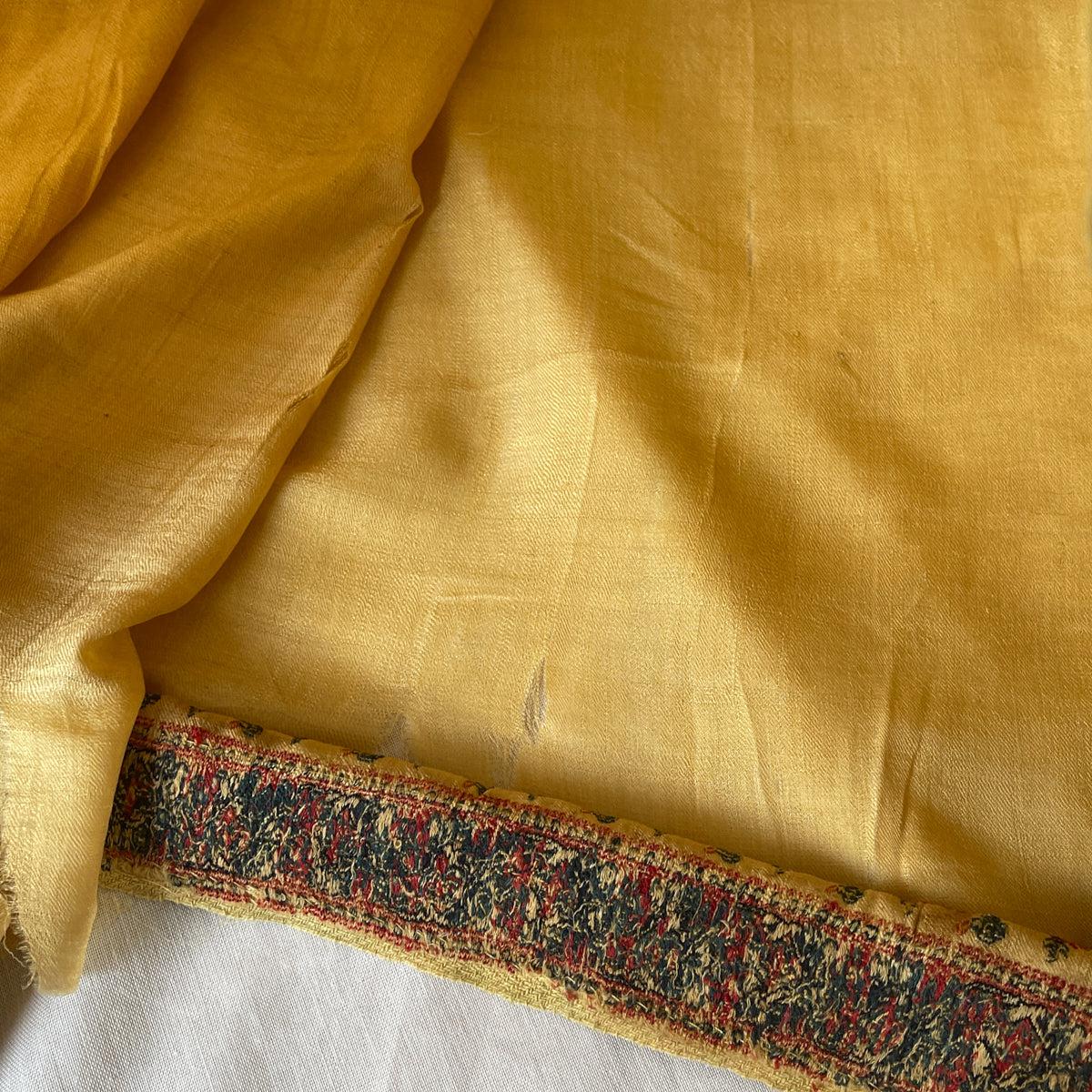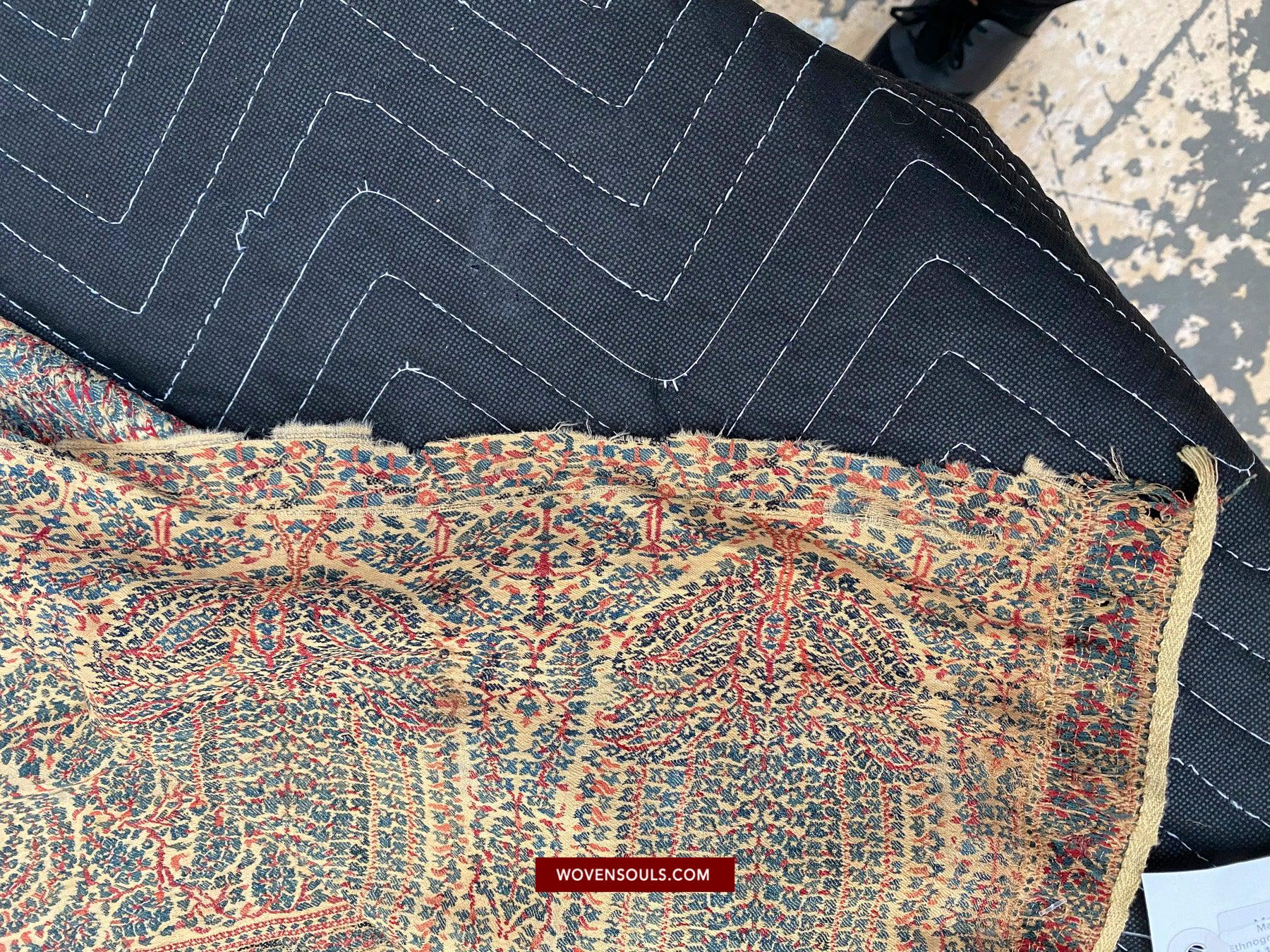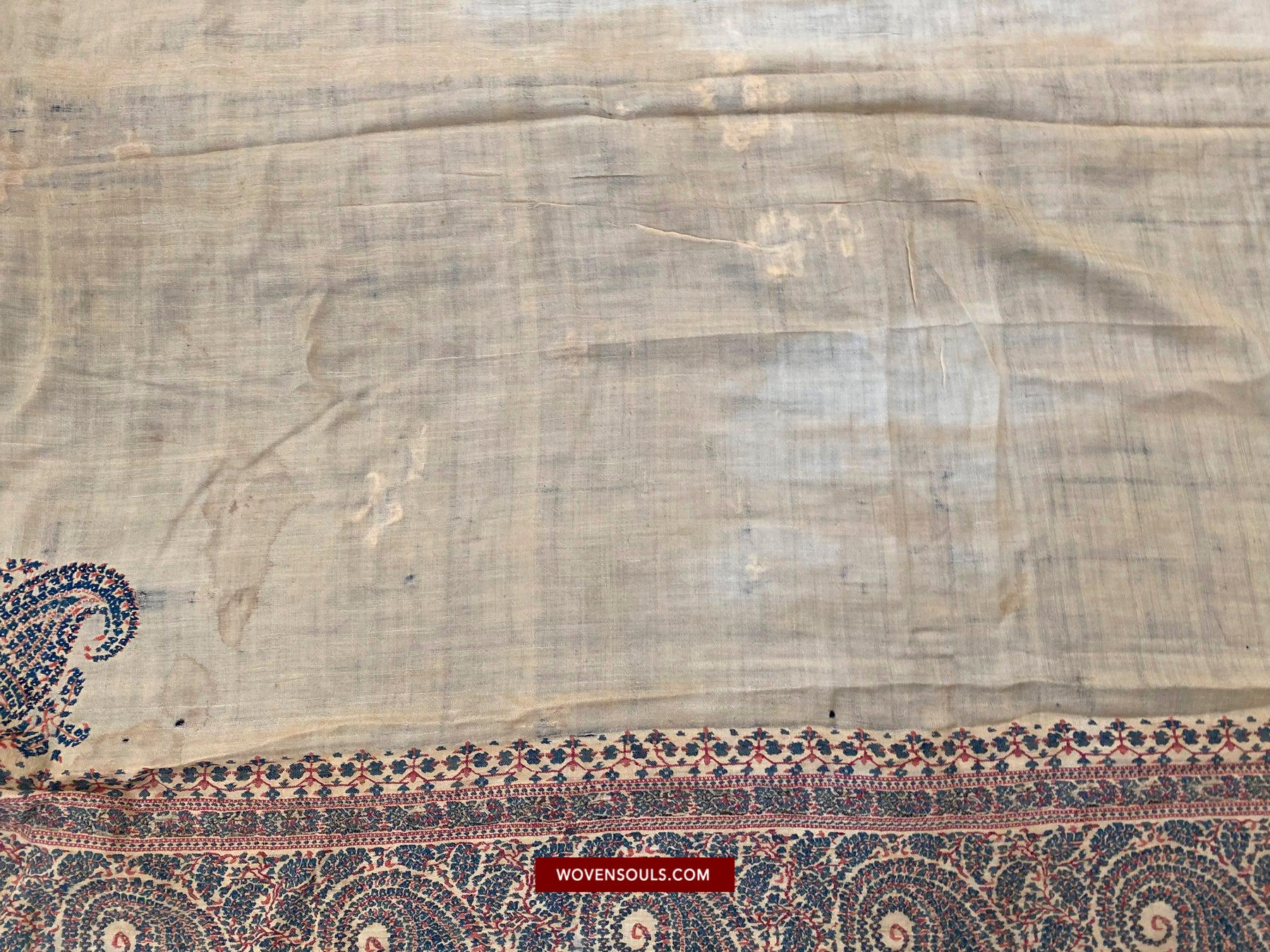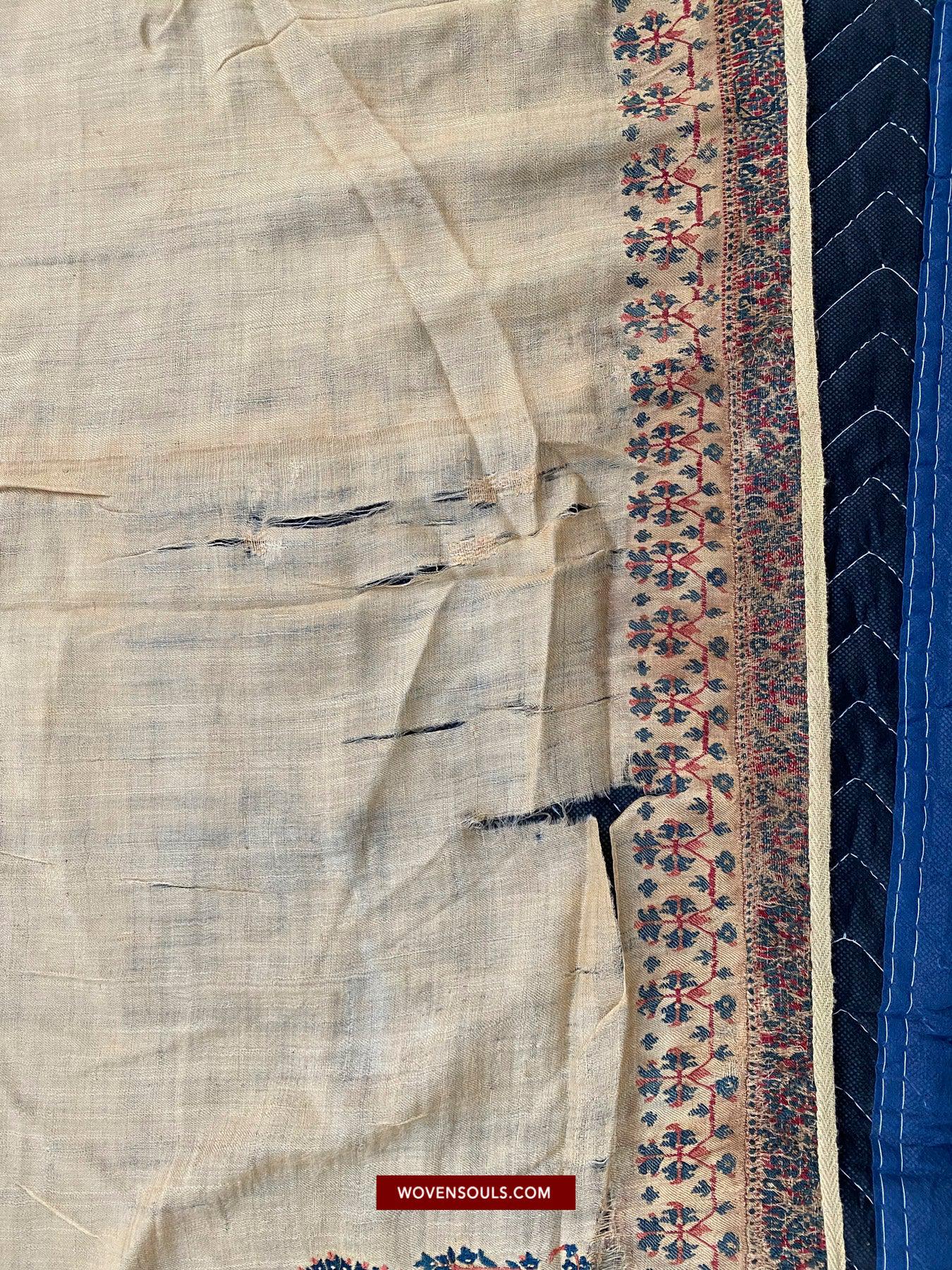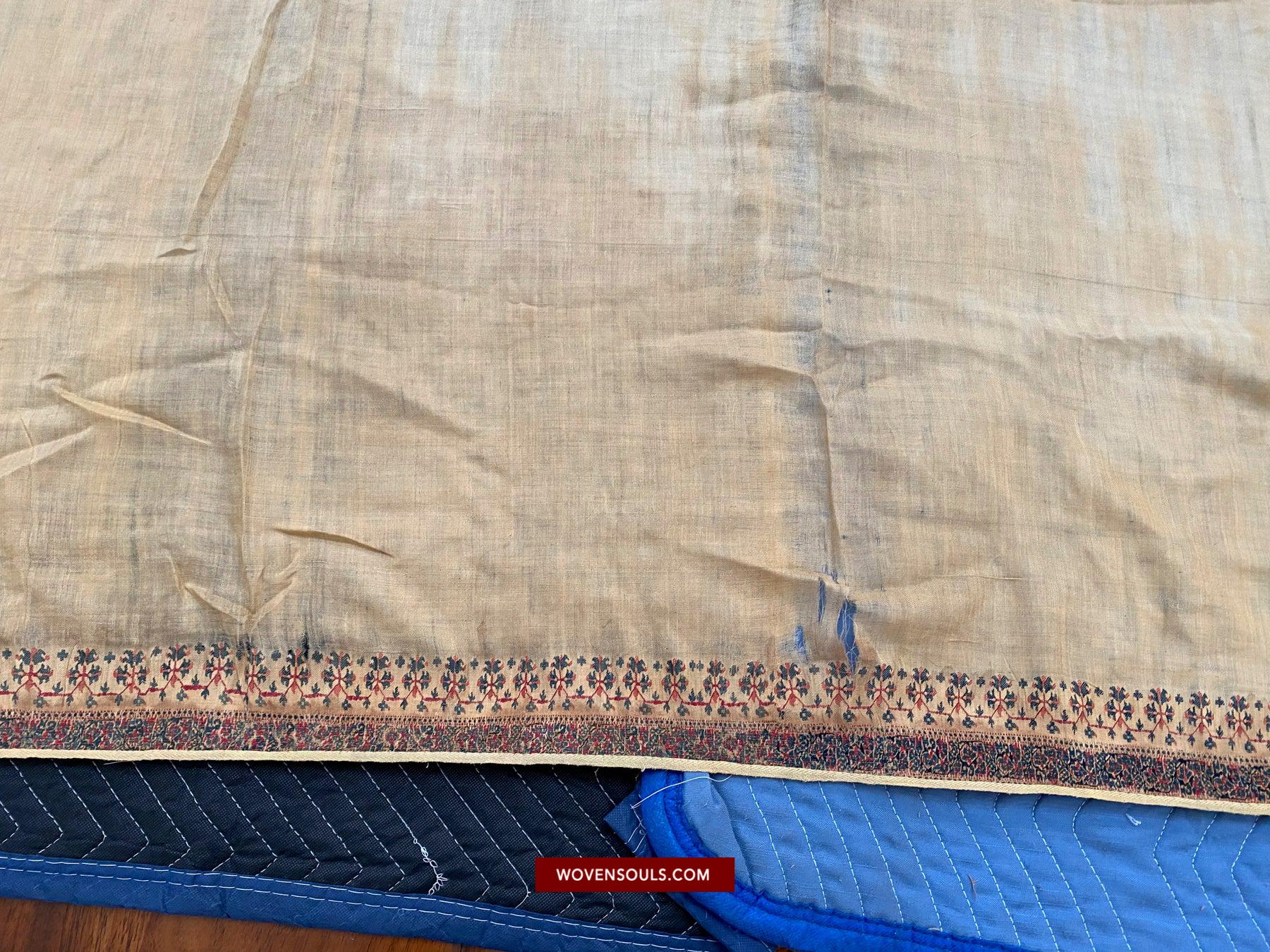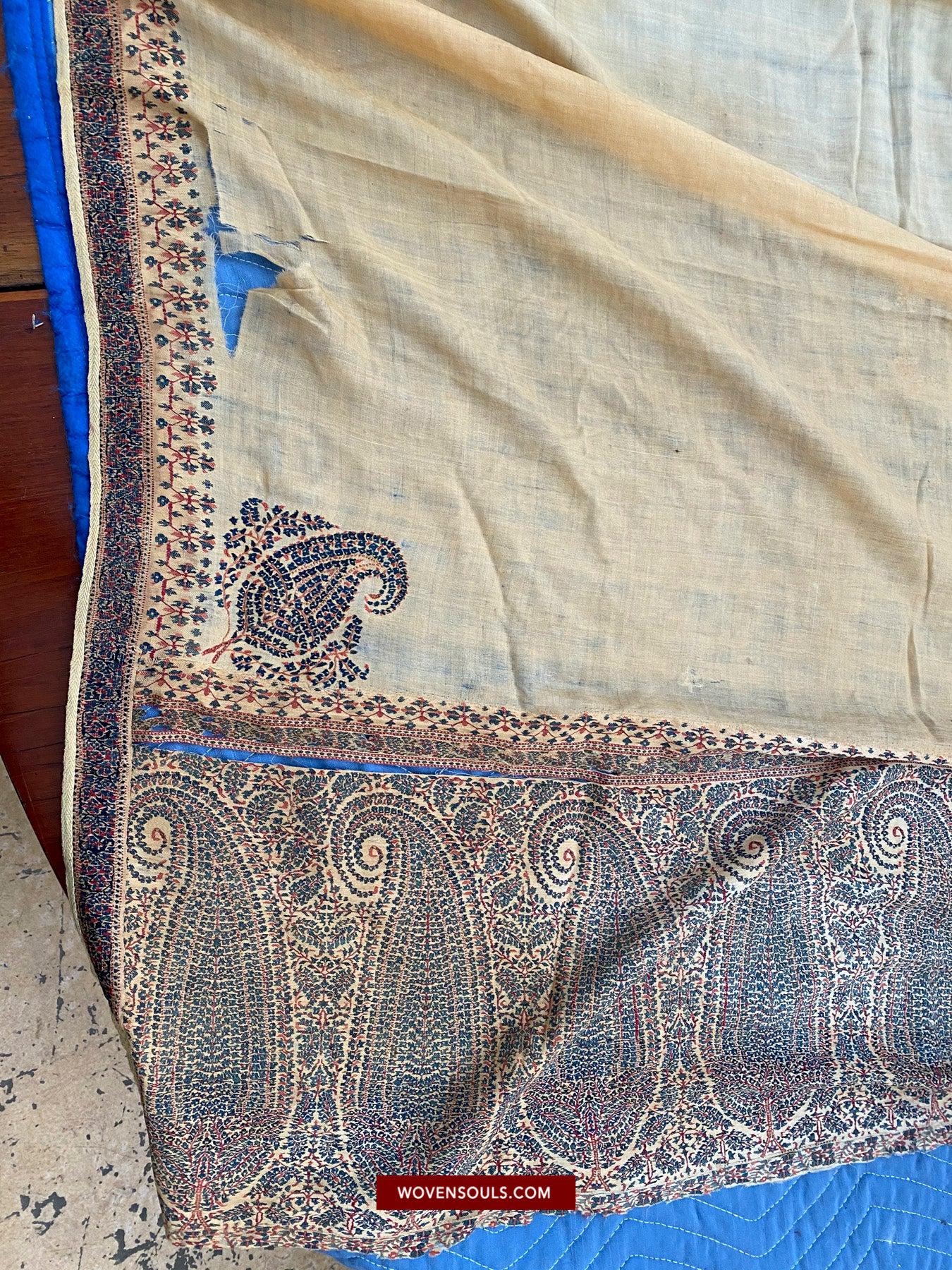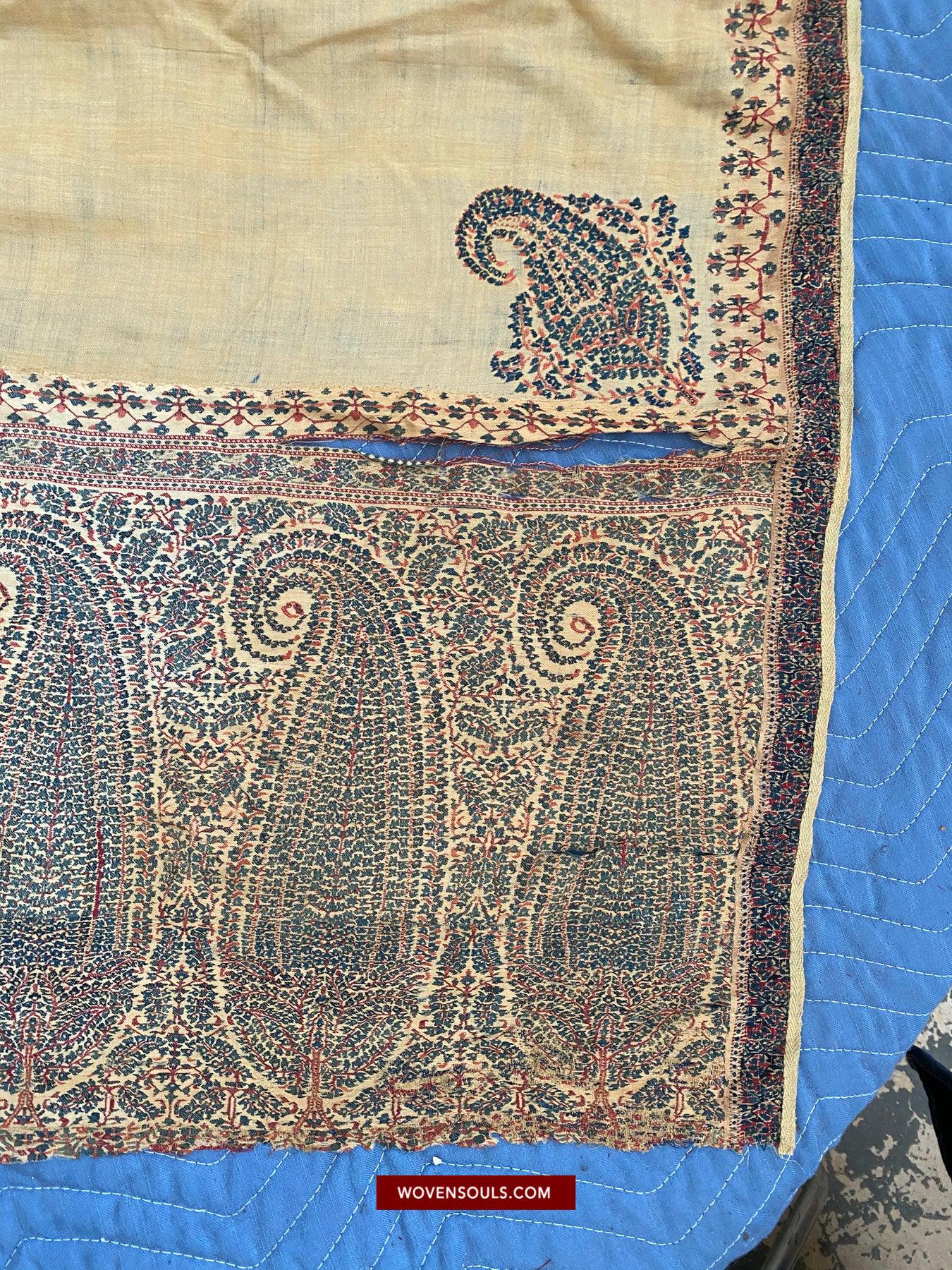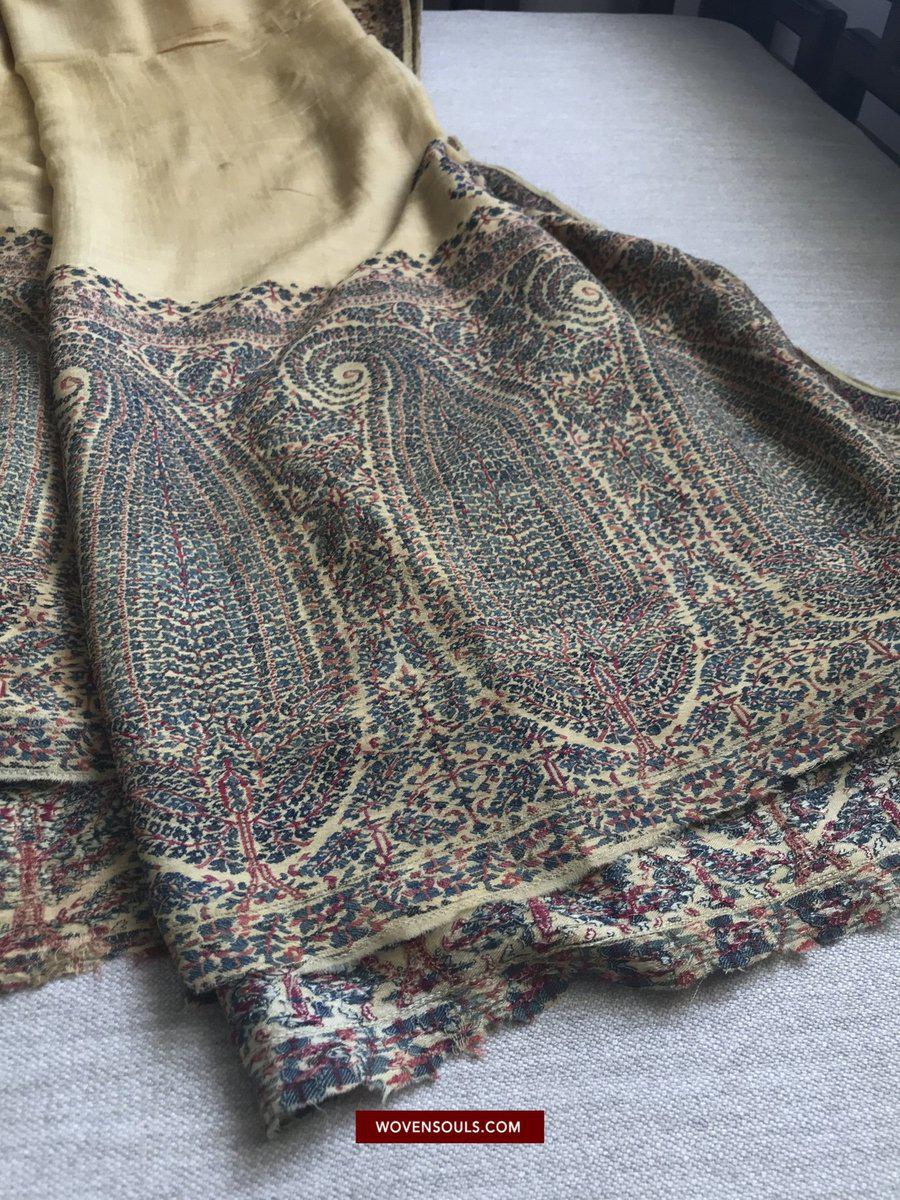1510 SOLD - Superfine Antique Kashmir Pashmina Dochalla Long Shawl
Superfine Antique Kashmir Dochalla Long Shawl
PLEASE SEE ALL THE PHOTOS OF THE DAMAGE BEFORE PURCHASE
Superfine grade of wool
Has an off-white field (yellowed with age) with two end-panels, each finely woven with a row of tall teal / green boteh and original selvedge.
Colours of the borders are fresh.
Some stains and darns to the field. Minor losses to edges. Edges have slightly frayed.
Has tears, damage, splits and needs repairs & tender loving care. Very fragile as the base cloth is extremely fine and therefore vulnerable. Will do well with a backing.
Of the 7 antique pashminas in the Wovensouls shelves at the moment this one is unusually fine and light - so much so that the field has been damaged by the weight of its own decorated ends. Too beautiful for its own good I guess!
A remarkable feature is that the borders along the long edge are directly woven onto the shawl - it isn't a separate panel that has been darned onto the sides- as is the case in many Kashmir shawls.
111'' x 50'' (282 x 127 cm).
Kashmir, possibly 18th century
Acquired from a US Auction House
While the square shawl (rumal) was worn most commonly by women, the
long shawl (dochalla), characterised by its rectangular shape, was particularly
favored by men and was worn draped over the shoulder or around the body
for warmth.
The decorative repertoire for such shawls gradually expanded
during the eighteenth and nineteenth centuries from elegant, minimally
embellished shawls with intricate boteh adorning the borders, like the
present shawl, to expressive and expansive designs.
(Frank Ames, “Woven Legends: Carpets and Shawls of Kashmir,”)
SIMILAR EXAMPLE AT THE MET MUSEUM: Link
A YOUNGER SIMILAR EXAMPLE SOLD AT CHRISTIE'S: Link
This item has spent a lifetime being used for the purpose of its creation with the original artist/user. Signs of this life lived heartily may be present on the piece in the form of stains, thread loss, loose threads, holes, tears, color run and other imperfections. Therefore the condition must be assumed to be “not” perfect. More photos of such imperfections will be provided on request.
***

